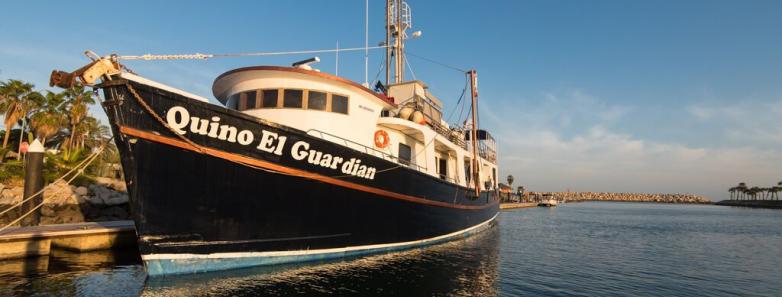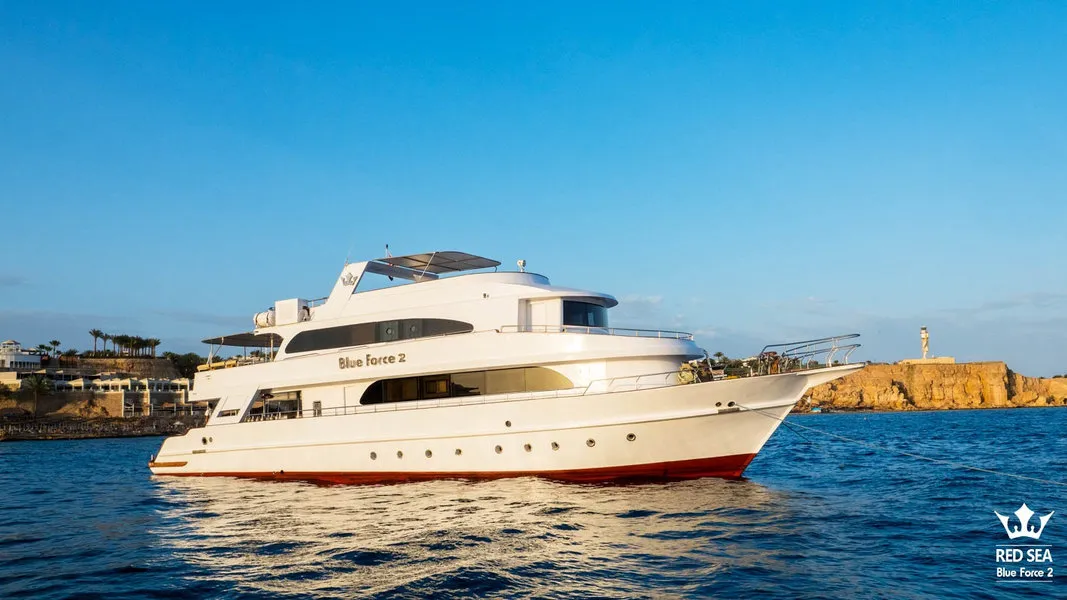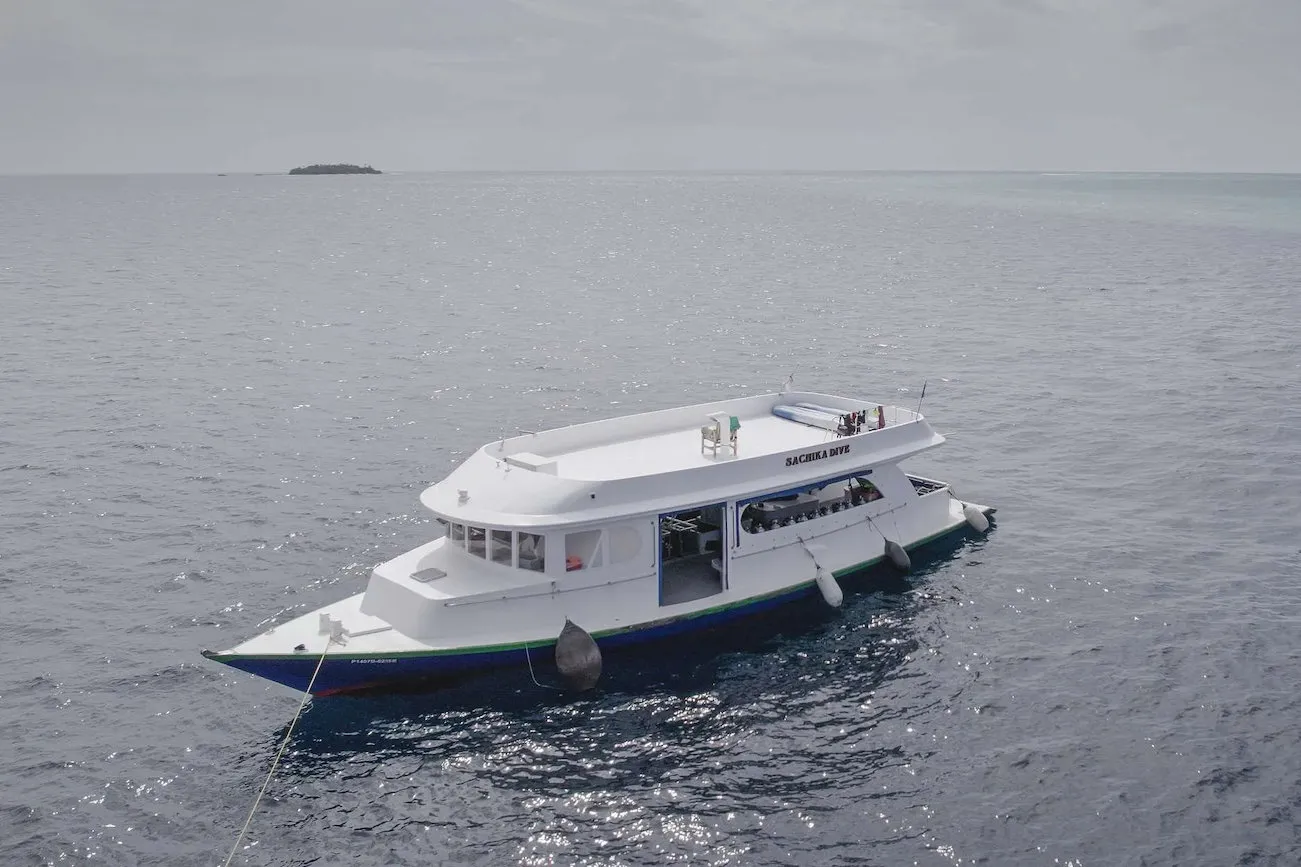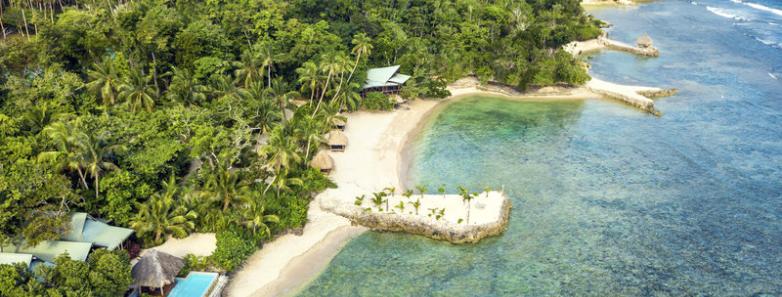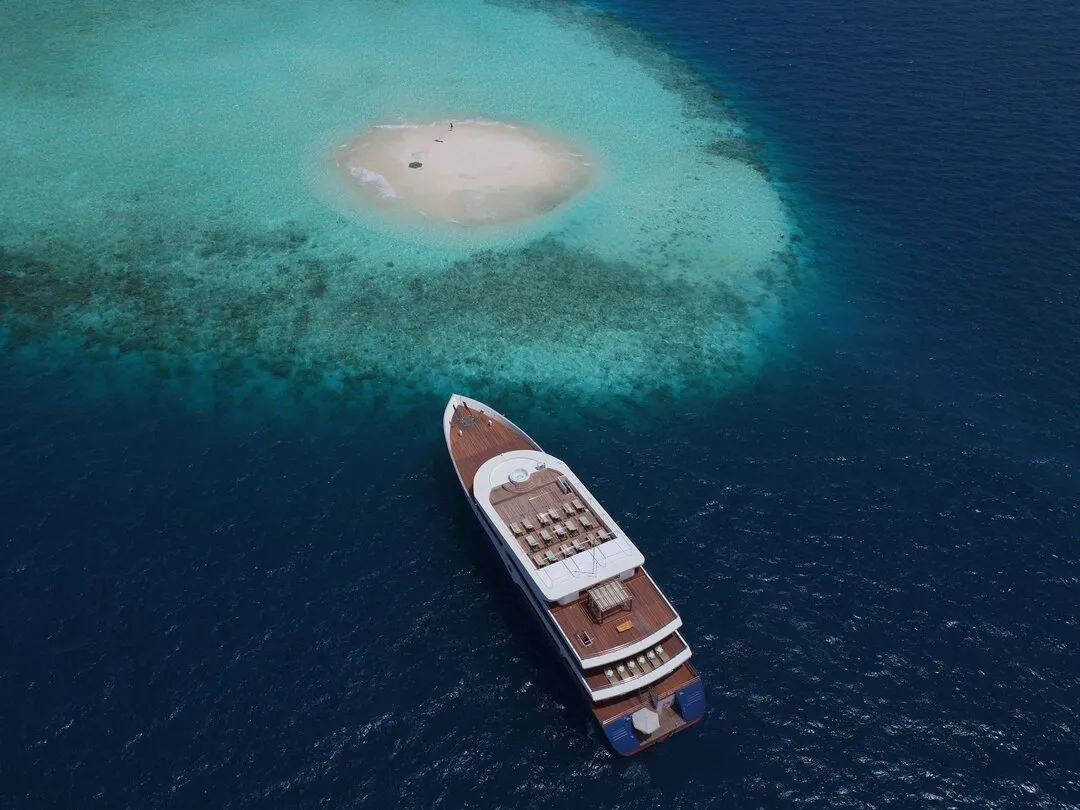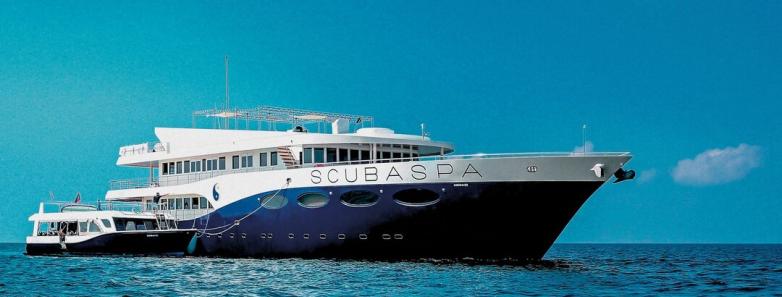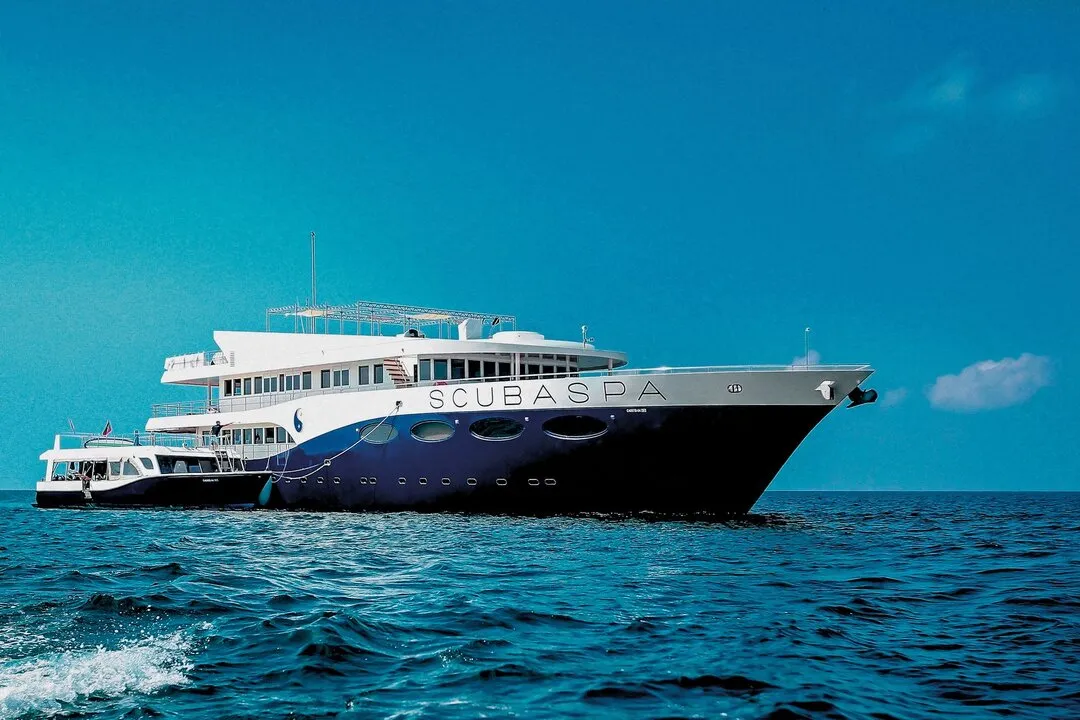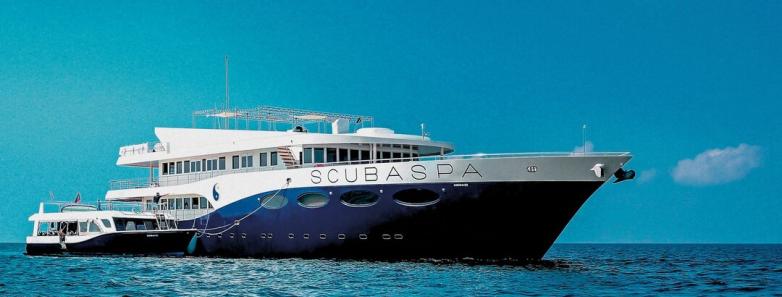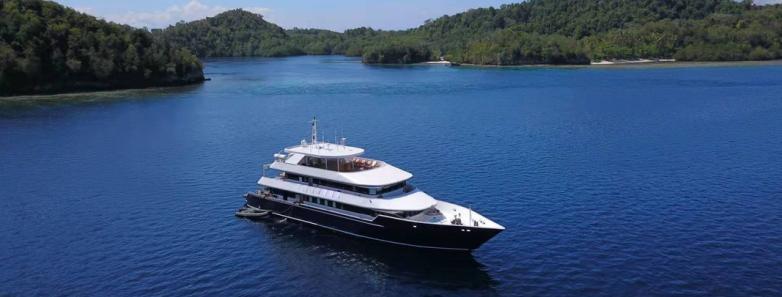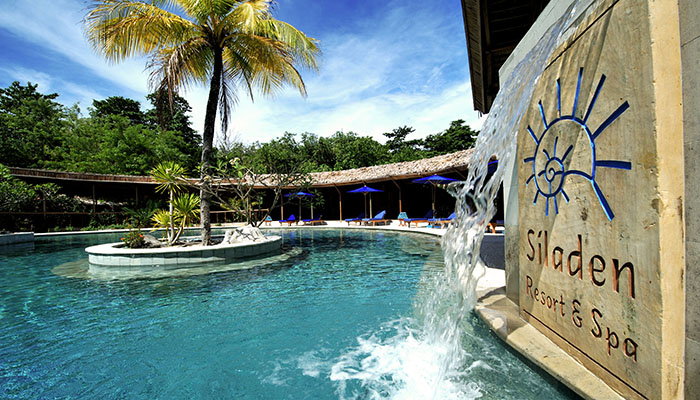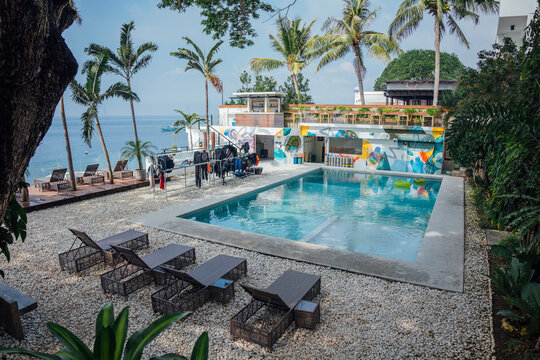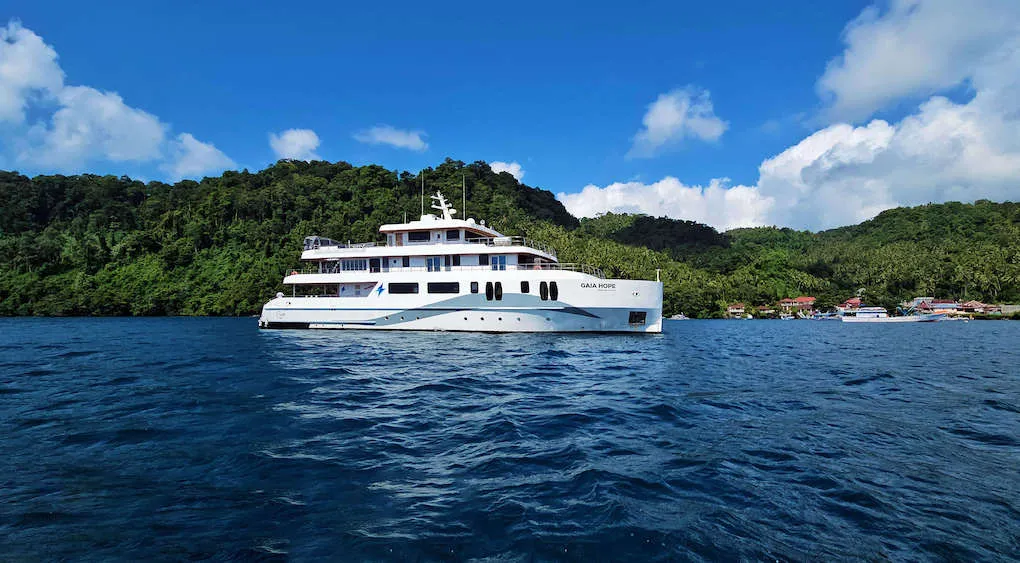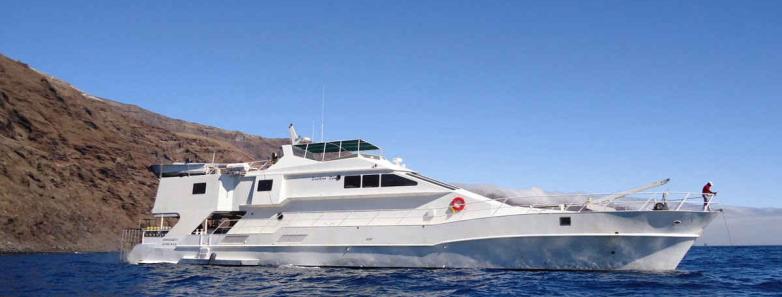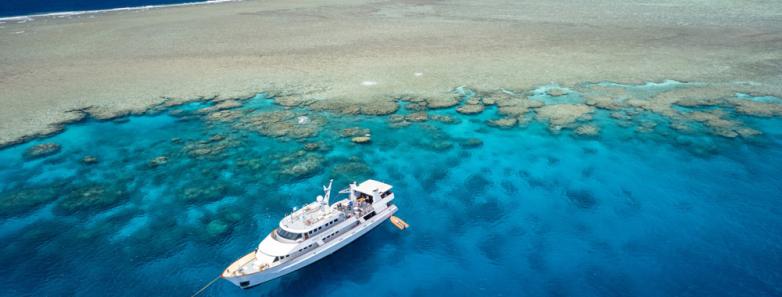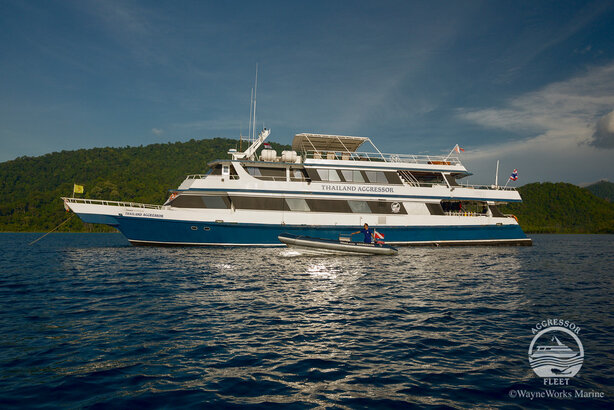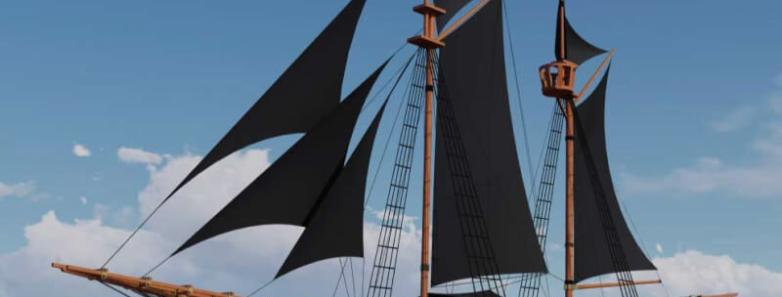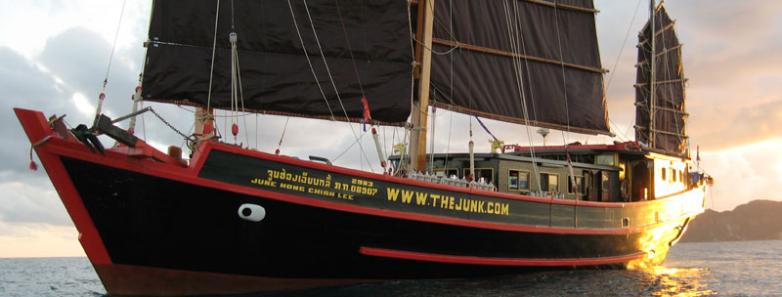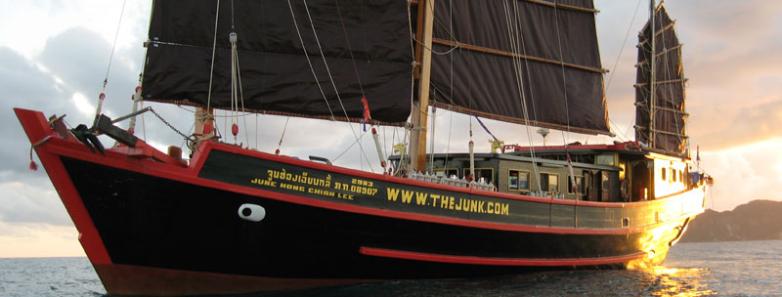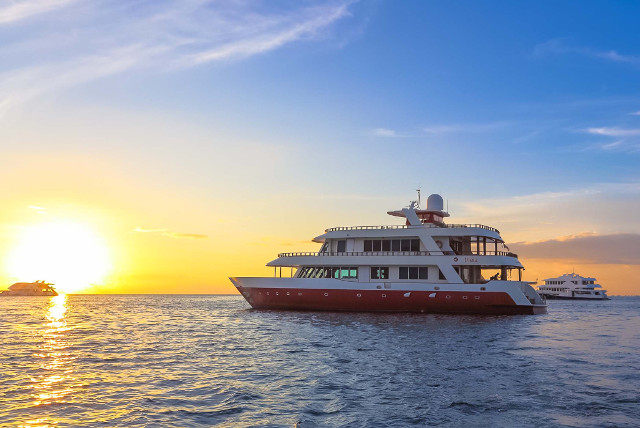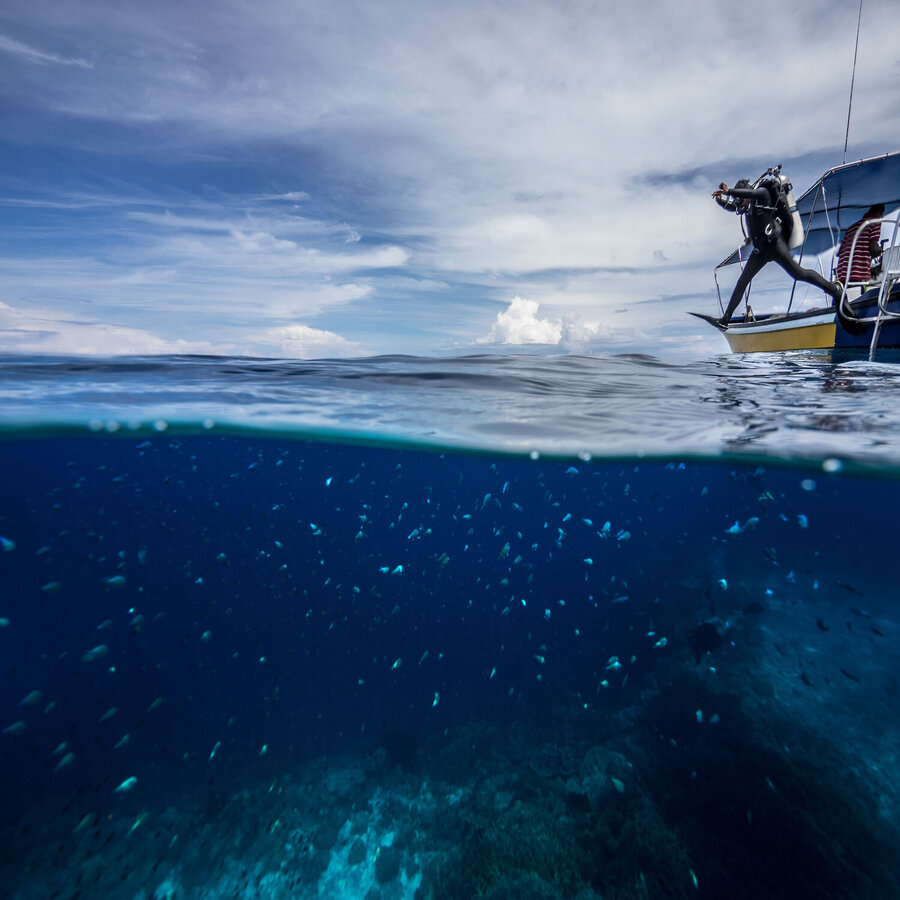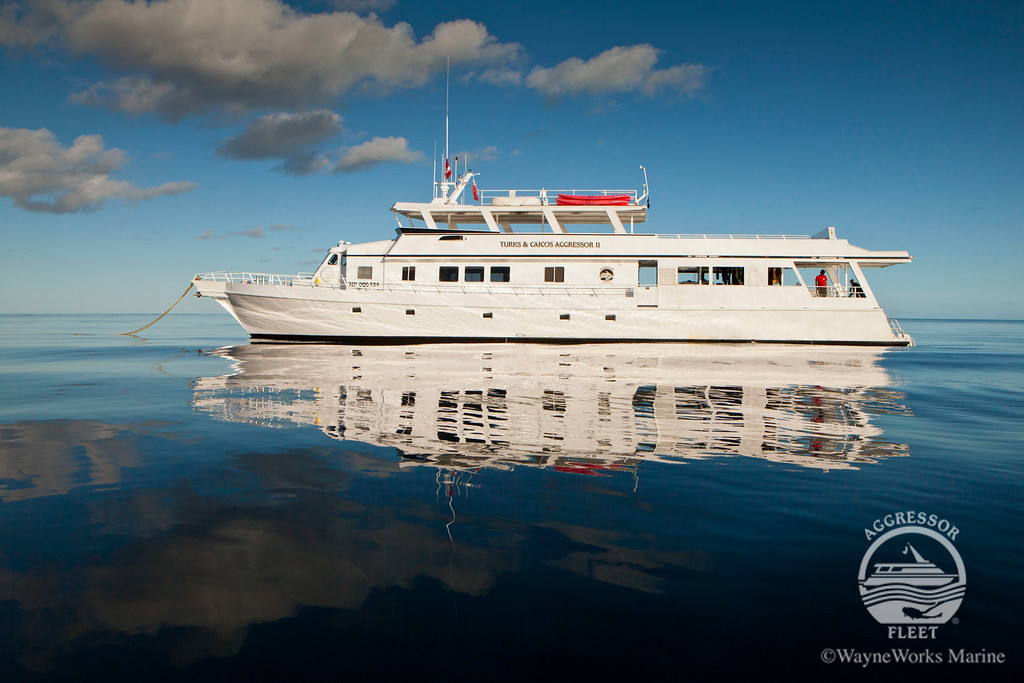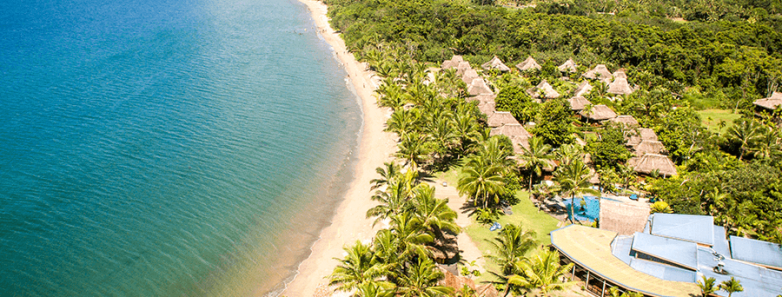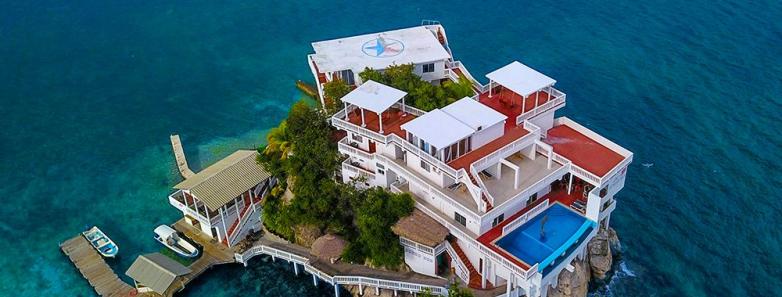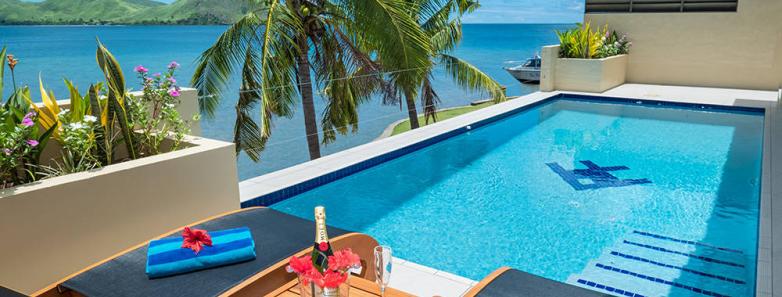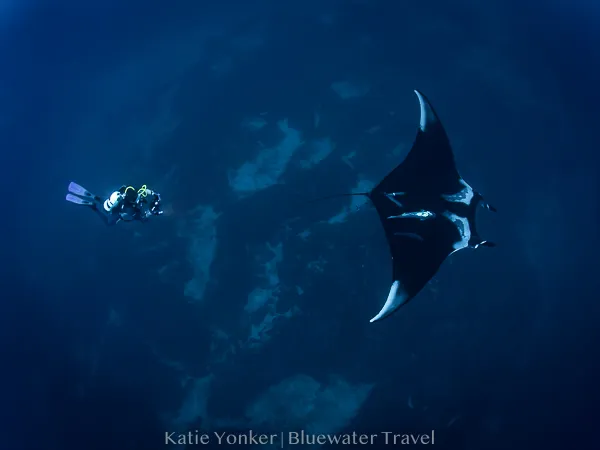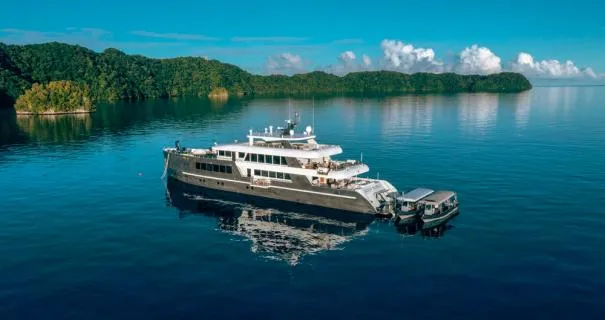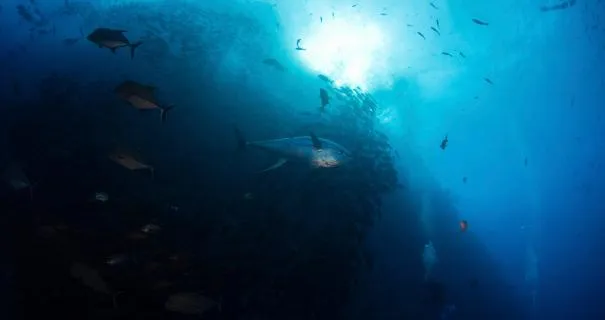Komodo
The Komodo diving scene is world-renowned for its thrilling drift dives, huge schools of fish, healthy and colorful coral reefs, and great manta ray encounters.
Average flight time from LAX
25 hours
Scuba Dive Level
All Levels
Visibility
50 to 131 feet (15 to 40 meters)
84°F / 29°C
Average Water Temperature
Manta Ray Encounters
Pelagic Encounters
Scuba Diving In Komodo, Indonesia
Komodo diving highlights
Some of the things that make Komodo a popular diving destination is its easy access from Bali, the ever-popular tourist hotspot for scuba divers and non-divers alike.
Intro To Komodo National Park Diving
Bordered by the Sulawesi and Flores Seas on the north side and the Indian Ocean to the south, Komodo National Park is a marine protected area and a UNESCO World Heritage Site comprised of three major islands: Komodo Island, Rinca, and Padar, as well as numerous smaller islands many of which offer world-class diving.
Komodo National Park is also home to the endemic Komodo dragon, the world's largest and heaviest dinosaur-like lizard, which can reach up to 10-foot (3-meter) long and can weigh more than 300 lbs (136 kg).
As a scuba diving destination, Komodo offers two distinct dive areas: North Komodo and South Komodo. Even though they are close to one another geographically, these areas are often worlds apart in terms of conditions.
View Location on Google Map or learn the differences between North & South Komodo
Komodo Diving Information
In the north of Komodo, the water is generally warm and sparkling blue, as you might expect in such tropical latitudes. In the south, however, upwelling currents deliver chilly, nutrient-rich waters from great depths, creating perfect conditions for plankton growth. Visibility often isn't great, but most divers agree that the trade-off is well worthwhile, as this living planktonic soup supports an incredibly diverse and healthy marine life community.
Despite considerable differences in temperature and visibility, underwater terrain is quite similar between north and south Komodo. Komodo diving typically consisting of drop-offs, pinnacles, fringing reefs, and shallow coral gardens. The destination also attracts many divers eager to see a Komodo Dragon, the world's largest lizard in the wild. This unique carnivore is found nowhere else in the world. Divers returning from Komodo generally have stories of mantas, lots of schooling fish, reef sharks, turtles, a cornucopia of macro subjects and some "brisk" currents.Because of the currents, diving in Komodo is generally not suitable for beginners.
Komodo Marine Life & Photography Subjects
- BIG ANIMALS
- Komodo Island is among the top sites in the world for diving with manta rays. Most trips will include manta ray sightings at one or more sites. Pelagics such as dogtooth tuna, giant trevally, barracudas are often seen. Napolean wrasse and bumphead parrotfish sightings are also possible. You may see a few reef sharks, but they are not especially common. Turtles are encountered at many sites.
- SMALL CRITTERS
- Frogfish, stargazers, spiny devilfish, leaf scorpionfish, ghost pipefish, cuttlefish, bobtail squid, garden eels, bobbit worms, and pygmy seahorses are all commonly seen. Unique critters like the "Ladybugs" are also found in Komodo.
Diving Conditions
Water Temperatures: Water temperatures are usually moderate, but can range from 66f / 19C to 86f / 30C on the same trip. The temperature changes more based on location, than on time of the year. The north side is always warm, but the south side is often colder. South Komodo tends to be warmest and clearest from Nov- Jan.
- Visibility: averages 15 - 40m (49 - 131 feet)
- Depth Range: 3 - 40m (10 - 131 feet)
Typical Komodo Dive
You are typically dropped off by a tender over the dive site and may need to do a negative entry if over a submerged pinnacle. The tender will do a live pickup when you surface, and an SMB (safety sausage) is absolutely mandatory. Some divers will use reef hooks, on the pinnacle dives so you can stay put and enjoy the view. Downcurrents are possible, especially on steep drop-offs, but they can usually be avoided with proper planning.
Komodo has a well-deserved reputation for strong currents, but there are many sites where the flow is minimal and diving is easy. Some reefs are also suitable for drift dives, allowing you to sail along with the current rather than fighting it. Even at places that are notorious for strong currents, problems can usually be avoided by diving at slack tidean excellent reason to go with a reputable, experienced dive operator with plenty of local knowledge.
Overview of Komodo Island Dive Areas
- South Komodo
- With colder waters (low 70's F/ 21C) and lower visibility (20ft - 50ft/6m-15m), why would anyone come here? South Komodo has incredibly rich marine life, such as beautiful tiny amphipods, sea apple cucumbers, sponges, colorful soft corals, frogfish, stargazers, electric rays, lots of critters, and much more. Everything here is generally larger, and there is more of it, because of the rich supply of plankton.
- Top dive areas include Rinca Islands Horseshoe Bay, home of iconic sites like Cannibal rock and the Great Yellow Wall. The bay is protected from most bad weather, bathed with nutrient-rich currents, and has extremely varied underwater terrain, supporting an amazing variety and density of marine life.
- Komodo dragons are found on Rinca Island at Horseshow bay, and divers will often go on land for a little while in-between dives to see the dragons. You can actually see them either from land or from the dinghy boat. Divers have even seen them swimming in the dinghies.
- While South Komodo is mostly about the critters, there is a notable big animal dive site called Manta Alley, which you may have guessed, has Mantas.
- North Komodo
- North Komodo is warmer and clearer than the South and delivers what can be considered typical Indo-Pacific reef diving. The north has its share of big-fish sites and macro sites. Castle Rock is a favorite submerged pinnacle, full of trevally, mackerel, wide-angle and macro subjects. Even bottlenose dolphins have been known to visit the site.
- Another submerged pinnacle, called Hard-To-Find reef, has many massive schools of fish, reef sharks, and turtles. On these kinds of sites, you often don't need to swim far, but simply park yourself and watch the show.
How To Get There
Fly internationally into Bali (DPS), where you can transfer to a short domestic flight to Labuan Bajo (LBJ). Some liveaboards also depart from Bali, sparing you the extra flight.
How To Dive Komodo
Komodo National Park is a terrific liveaboard destination since it will be much easier to cover the whole area (North & South) in one trip. However, there are numerous dive resorts and operators available in the area.
Options For Combination Trips
We highly suggest combining a trip to Komodo with a Bali trip. Also, instead of doing only Komodo, you can do a "transition trip" where you start in Komodo and end in Flores (Maumere), or vice-versa. Additionally, Alor with its healthy reefs is another destination to add to the mix.
You can check out our list of Bali Dive Resorts here...
Best Time to Dive Komodo
For best access to all sites in the park, we would visit Komodo from March to May, and again from September to November.
From mid-May to early September, southeast winds make some southern sites inaccessible, but this is the best time for the northern sites. The converse is also true; from mid-November through January most northern sites are exposed, but conditions in the south are optimal.
Topside & Non-Diving Activities
Land tours of the Komodo Islands are definitely a highlight. Komodo dragons are found on Komodo and Rinca Islands, and most trips provide opportunities to see them between dives. You can view them either from land or from the dinghyoccasionally theyll even swim out to greet you! A word of caution is in order when around the dragons, however, as they can be aggressive, and even a minor bite may cause a life-threatening infection. Follow your guides instructions and you shouldnt have any problems.
Practical Information
- Currency: Indonesian Rupiah (IDR). A dollar or Euro will get you a lot of them.
- Electricity: Generally is 220 volts, with 2 round pin plugs (European Standard)
- Vaccines: Please check the CDC website for updated information on vaccines, health concerns, etc. It is recommended that you are up to date with Typhoid, Tetanus/Diphtheria, Hepatitis and Polio for any trip to the tropics.
- Visa: Visitors from most countries can receive a 30-day visa ($25) upon arrival to Indonesia. Make sure your passport has a blank page and is valid for 6 months.
- Language: Bahasa is the language of Indonesia. It is very easy to learn, and we suggest you learn hello, thank you, how are you, and what is your name before your trip.
- Domestic Flights: As with all domestic Indonesian flights, be prepared for changes or delays.
- Safety: A surface marker buoy is essential for diving Komodo, and as with all dive travel, evacuation insurance is highly recommended.
Fellow traveler's reviews
PWheelan
1164 Reviews
My son and I did a dive trip to Komodo in August 2023. The area is amazingly scenic - rugged, arid mountains, beautiful white sand beaches, and crystal clear water. The coral in the area appears to still be very pristine, and the marine life is mind-boggling. We saw sharks, mantas, sting rays, eels, turtles and hundreds of types of colorful fish. The short hike in Komodo Nat'l Park is also a highlight - the dragons are incredible creatures.We had one crossing (~12-14 hours) that was a bit rough, but otherwise the sailing is pretty smooth.Would highly recommend this region for avid divers!
AnneR
1164 Reviews
Since my previous visit to Flores and Komodo Island, many remarkable changes have taken place. Over the course of ten years, the small town of Labuan Bajo has undergone significant development, now boasting an international hospital, numerous dive centers, a wide array of hotels and restaurants, and an impressive airport.The diving in Komodo remains as awe-inspiring as I remembered. Expect to encounter stunning coral formations, frequent sightings of sharks, majestic manta rays, and captivating schools of fish. It's important to note that Komodo is primarily geared towards experienced divers, as the currents can be incredibly strong, particularly in North Komodo at sites such as Cauldron, Crystal Rock, and Castle Rock. Divers should exercise caution and feel comfortable navigating challenging conditions.In terms of diving options, I wholeheartedly recommend choosing a liveaboard experience over day trips. Having personally tried both, I found that liveaboards offer several advantages. First and foremost, liveaboards allow you to be the first divers on the sites, ensuring an uninterrupted and immersive experience. Additionally, liveaboards offer flexibility in adapting to changing conditions, such as selecting alternate dive sites if currents prove too strong. On the other hand, day trips often result in crowded dive sites, as multiple groups arrive simultaneously.In conclusion, I highly recommend Komodo as an affordable alternative to Raja Ampat. It offers a wealth of underwater wonders and provides a remarkable diving experience. To fully appreciate the destination, I recommend allocating at least five days on land as well. This will allow you to explore the captivating landmarks and natural beauty that Flores Island has to offer.
jmnigro
1164 Reviews
I thought when I was a kid I wanted to go to Komodo to see the dragons. I never dreamed then that it would be scuba diving that would bring me there. Komodo lies in Indonesia within the Coral Triangle, where the richest biodiversity in marine life resides. As a dive destination, Komodo is known for its swift currents and cool thermoclines. Based on these characteristics, I was somewhat reluctant to dive Komodo. Furthermore, reading about diver mishaps in Komodo, which is easy to do because of the Internet, did not settle the issue. A culmination of a diver’s worst nightmare in Komodo was actually a true story: divers had been both swept away and had to fight off Komodo dragons after finding refuge on an island. What I discovered, is that divers in Komodo who are most vulnerable to these incidents are the ones from liveaboards without dedicated boat tenders. It is worth it to pay the price to be on a liveaboard that really knows the area in order to have the best experience.Komodo, like most of Indonesia, is a string of islands created by volcanic eruptions. It is particularly fascinating to me as a diver, as there is a combination of geological, geographical as well as biological phenomena to experience. Smoke plumes surround the peak of Sangeang, but that it is active, is more easily viewed on the sea floor at dive sites like Tiny Bubbles.Although macro life is prolific here, pelagic life is also abundant. I have been on trips where a mixture of oceanic and reef manta rays have swooped around us on successive dives at Manta Alley and seen sharks and dolphins. Manta Alley is a tough spot to reach in summer but it is a beautiful amphitheater formed of volcanic rock where you can sit on the bottom to watch the mantas overhead. The volcanic amphitheater provides a spectacular backdrop for viewing the manta rays, and at times, I have forgotten that I was there to watch the mantas and not the many sessile creatures that live in these walls as permanent spectators to the graceful pelagic animals.Horseshoe Bay is the dive destination within the heart of South Komodo. It harbors a spectacular series of dives within a small area, and at the same time offers the first opportunity to view the infamous Komodo dragon in one of its natural habitats (from the anchored boat), the beach on Rinca Island. Here, crab eating macaques skip around on the rocky section of the beach collecting the shellfish when the tide is out, while the dragons slink out in public only when the sun is at its peak and the sand at its warmest. Fortunately, they do not like to swim so much.The dives in this area often had a bit of current at the surface, so negative entries were necessary. However, once under the surface, the current was not detectable. Cannibal Rock is a fabulous volcanic peak that you circle but never in a single dive, as it is crowded with soft corals, anemones, mating nudibranchs, frogfish, and shrimp. The Yellow Wall o’ Texas is one of the most extraordinary wall dives on the trip, in that the soft corals are swollen open all day long due to currents even in the bright sunlight. It is a hypnotic ride along a wall of soft corals and anemones rhythmically responding to the current.The Three Sisters is a dive site of three underwater pinnacles that become progressively higher and are separated by several meters. The current is flowing into one side of the pinnacles so that there is a big burn at the entry just downstream of the current and in between where the current runs through. The Sisters are full of life everywhere you look. There is small stuff and interesting behaviors between different types of fish to look out for.Beauty is flaunting itself everywhere in Komodo, but it lies deep within the muck dives if you are open to the challenge of finding it. To me, there is something compelling about these dives even though they at first may appear to be desolate. The dive guides always find something. Wainilu is a muck dive situated around a beautiful island, but underwater I felt as if I was immersed in a black and white photo, as there is low visibility and little sunlight. But then finally, a radiant spot of color will appear somewhere and then it is a race to see all that there is on your remaining air.You get that feeling that a dinosaur will appear at any moment, but especially on the night dives. Evolution seems to have a complete lack of any rational purpose when you evaluate the diversity of the creatures on these night dives. I especially liked the night dive at Torpedo Point in Horseshow Bay, as our guide made torpedo rays appear out of the sand, revealed hidden shrimp in basket sea stars, and coerced delicate crabs out of their soft coral hideouts.There were “sand-based” breaks from my boat. A very serious beach volleyball match took place between the crew, guests, and locals from an island and we took an easy hike to Pink Beach on another island to watch the sunset . All serve to emphasize the remarkable diversity of the landscape of Komodo.I am always anxious about leaving Komodo and not ever returning!Best months for divingI have been to Komodo in May, July, and September. All months are spectacular but May was still green, and we were able to dive Manta Alley which was impossible to reach in July.You must take an experienced liveaboard for the best adventure, and I would go for a 10- to 12-day itinerary. Anything else is too short.
nudisusie
1164 Reviews
I went for a 10-night liveaboard which departed from Bima Bay and combined diving in North and South Komodo.Day 1 – flight from Bali to Bima was delayed so we boarded the liveaboard around 4pm had briefings and orientation, dinner and bintangsDay 2 – Sangeang Island & Gili Banta (blue water, temp 28C, viz 15-25m)Bonto Reef &Techno Reef; both have black volcanic sand with small reef outcroppings, black coral bushes, soft corals. Great for critters. Some disturbance at Bonto Reef could be seen from the recent eruption of Sangeang Api but there appeared little affect to the marine life.Marine Life: Nudibranchs (about 20 different species spotted), ornate ghost pipefish, cuttlefish, snake eels, leaf fishStargazer Reef (AKA Circus / Star Wars) (night)– large sandy area with a few coral bommiesMarine Life: Stargazers!Day 3 – North Komodo & Gili Lawa Laut – (blue water, temp 28C, viz 25-30m)Coral Garden – White sand with coral bommies – little if no current – we used the dive to practice with reef hooks and smb deployment for later in the trip. Marine Life leaf fish, nudibranchs, ribbon eel, moray eels.Castle Rock – large submerged coral pinnacle, strong current, negative entry and fast descent to cleaning station (20-30m). Reef hooks required. Shelter behind the pinnacle when making safety stop. Marine Life: white tips, schools of jacks, snappers, schools of bannerfish & surgeon fish, turtles, Napoleon wrasseCrystal Rock – large coral pinnacle which breaks the surface, secondary smaller pinnacle approx. 50m across a narrow channel. Marine Life: Pygmy seahorse, ladybugs, turtles, school of jacks, white tips, Napoleon wrasseSpanish Dancer Heaven (night)– Reef wall descending to 18m followed by white sand sloping reef. Marine Life: nudibranchs, flat worms, decorator crabs, commensal shrimps, lobster, sponge snailDay 4 – Gili Lawa Laut, Current City & Rinca (blue water, temp 28C, viz 25-30m)Golden Passage – wide channel with reef wall and sandy bottom at approx. 30m. Numerous whip corals. Current was mild but picked up during the dive to medium strength – the drift was fun and easy going. Marine Life: Bumphad parrot fish, Xeno crabs, turtles, candy crabs, blue spotted sting raysShot Gun! (AKA Cauldron) – Sloping reef / coral garden with a large “fish bowl”/ “cauldron” with white sandy bottom at approx. 25m.Gentle drift until the Cauldron lip when we were “shot” over the reef (8m) – fun drift and we managed to keep our group together by kicking slightly to the left and finished up the dive on the other side of the passage in apretty coral garden. Marine Life: pygmy seahorse, leaf fish, turtles, schooling snappers (2 people saw a manta and 1 a dugong!)Makassar Reef – long rubble reef with coral bommies. Mantas come to be cleaned / feed here but we didn’t have any luck. The reef itself is quite dull as you simply drift along keeping a look out for the big stuff. Marine life: white tip, eagle rays, sting ray.Wainlioo (AKA Dragon Besar) Sunset / Night dive – shallow rubble / broken corals followed by a slope with seagrass & coral bommies. Sunset / Night dive. Marine Life: mandarin fish, picturesque dragonets, hairy bat crab (took some time to id that one!), frogfish, pygmy cuttlefishDay 5 – Guided Dragon walk on Rinca, Padar Bay (Greenish & cooler water -25C, viz 10-20m)Dragon Walk was awesome – we saw 5 dragons out and about, some lazing close to the trail others prowling around near to the ranger’s station. Better experience than previous visits to Komodo the guides were informative and helpful.Secret Bay – relatively small site with reef wall starting at 18m – 30m. Plenty of corals, black coral bushes, anemones and barrel sponges. Viz was very poor. Marine Life: hairy squat lobster, mobula rays (just)! Thought the dive site a little lacking in event but if viz better then mobula rays would make it worthwhile.Tiga Dara (AKA3 Sisters)-3 pinnacles fairly close to each other, each covered in corals, loads of crinoids, whip corals. Mild current made it easy to cruise between the pinnacles, viz poor (10m). Marine Life: giant frogfish, xeno crab, devil scorpionfish, nudibranchs, cowries, porcelain crabsSunset on the beach with a few bintangsDay 6 – Nusa Kode, South Rinca (all dives greenish water with 10-15m viz and water temp 24C)Boulders – reef slope with large coral “boulders”. We’d been told there was a rhinopia spotted here so our dive focused on that and we found it at 30m. Medium current. Marine Life: Rhinopia, mobula rays, ribbon eels, nudibranchs, whip coral shrimps, crinoid cuttlefishCannibal Rock- large submerged pinnacle with soft corals,hard corals, sea fans, black corals and whip corals. Marine Life: turtle, frogfish, sea apples, zebra crabsRhino Rocks – sloping dark sand reef with small coral bommies, sea grass and sea fans. Marine Life: frogfish, soft coral cowries, mantis shrimp, pygmy seahorse, cuttlefish, plakobranchs, nudibranchs, zebra crabs, crinoid clingfish, Pegasus seamoths, bobbit worm.Torpedo Alley (night)- sloping dark sand with tiny sponges, corals and seagrass. Marine Life: all manner of decorator crab, octopus, skeleton shrimp, nudibranchs, sea pensDay 7 – 3 dives in Nusa Kode and dragon watching at the beach from the dinghies. We crossed from there to South Komodo and a late night dive was offered at Phinisi Wreck.Day 8 – South Komodo (viz 15-20m, water temp 22-24C)Manta Alley- reef wall with coral outcroppings. Cleaning station at 24m. Channels run between the rocks at 10-15m where mantas can be seen feeding. We made 3 dives and had success each time at the cleaning station, watching the mantas for 20-30 minutes then moving shallower up the reef. We think there were at least 15 different mantas including 2 all black ones. A late night dive was also offered at Pink Beach (Pantai Merah). Dive 2 was the best of the dayDay 9 – Current City & Gili Lawa Laut (blue water, temp 28C, viz 30-40m)Pink Beach – sloping coral garden with numerous bommies and white sand. Large patch of staghorn corals. Marine Life: leaf fish, ribbon eels, common octopus,Batu Bolong – coral pinnacle which breaks the surface has stunning hard and soft corals, a few overhangs and crevices. Need to watch out on the edges as the current can get very strong & turbulent. Marine Life: numerous fish species including puffers, snappers, lionfish, angel fish, nudibranchs, sea spiderCastle Rock – as above though the current was a little stronger and most of the divers were in a “ashing machine” style current during the safety stop – there isn’t much place to hang on, smbs were only deployed when stop was complete. Our guide Dince (who is tiny) had 1 guest hanging off her leg!Crystal Rock / sunset “booze cruise”Day 10- Bima Bay (muck diving, water temp 28C, viz 15-20m)Nudibranch Reef – silty sandy slope with a coral bommies & sponges. Marine Life: many different species of nudibranchsThe Unusual Suspects – sandy slope with coral bommies, shallow sandy area great for extending the dive time (I made a 103minute dive). Marine life: colemani shrimp, zebra crabs, crocodile fish, spiny devilfish, lionfish many types, seahorses, wonderpus, hairy filefish, juv. Barramundi, nudibranchs, frogfish,stone fish, Pegasus seamoths
Gibby540
1164 Reviews
Where to begin!A group of friends and me went on a Liveaboard throughout the Komodo National Park last summer… it was amazing! A key perk of Komodo is that it boasts a large variety of things to see (mantas, turtles, sharks, napoleons, etc), dive styles (pinnacles, wall dives, etc), and typically great visibility. The dive sites still have that “untouched” feeling, with healthy coral and an abundance of life. As a warning, not all but a few dive sites require 20-30 meters, as well as some challenging currents, so I advise anyone planning on going to be at least PADI Advanced Certified (or equivalent – dependant on Certification Company).Our favorite dive site was of course Karong Makasar - the manta cleaning station. During our time there, the conditions were an EXTREMELY fast drift dive (which was a lot of fun by itself) but gave us the chance to see mantas in all their glory. As a heads up though, this dive is solely for Mantas so it’s a bit of a gamble. It is the one dive site that barely any fish or coral dwell in the area except near the end of the drift so if you’re unlucky… you’ll just have had a fun time pretending to fly like superman… which let’s be honest… is also lots of fun.Not only can you find beauty under the water here, but the National Park boasts some of the most beautiful landscapes I have ever seen. I didn’t touch my book once as I was too busy marveling at the never-ending islands we weaved through. In addition, most Liveaboards make a stop at Komodo Island where you can steady your sea legs and get up-close and personal to some dragons… be sure to bring a slow friend just in case.The best testament I can make for this area is referring back to the conversations I had with the staff on our boat. Many had dove/worked all over the world but had said themselves that this was the best diving they had done. All in all, the combination of beauty above and below the water creates an unforgettable experience that I’ll treasure forever and hope to return to soon.

DEALS & SPECIALS
Dive Into Our latest Komodo Special Offers
All deals
RELATED ARTICLES
Stories Beneath The Waves
All articles

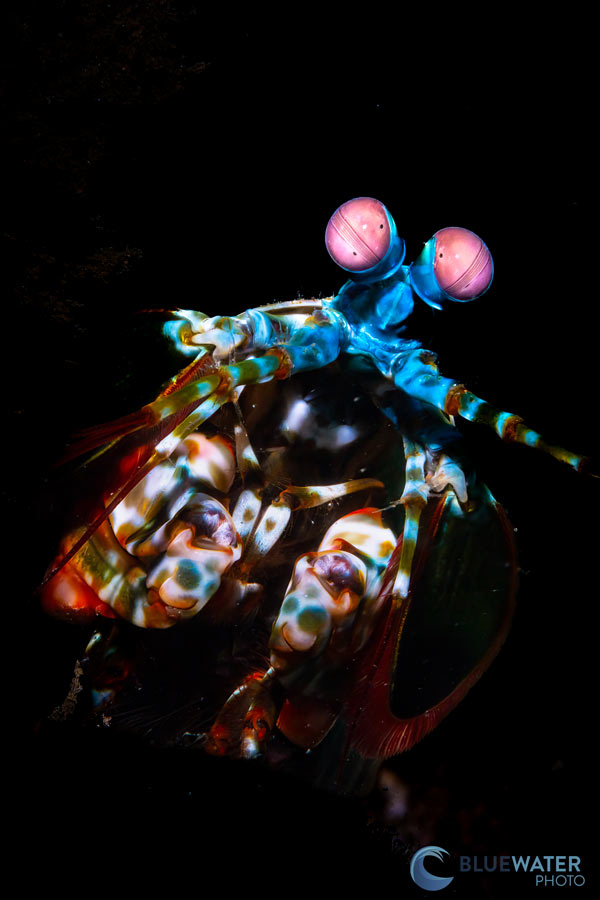















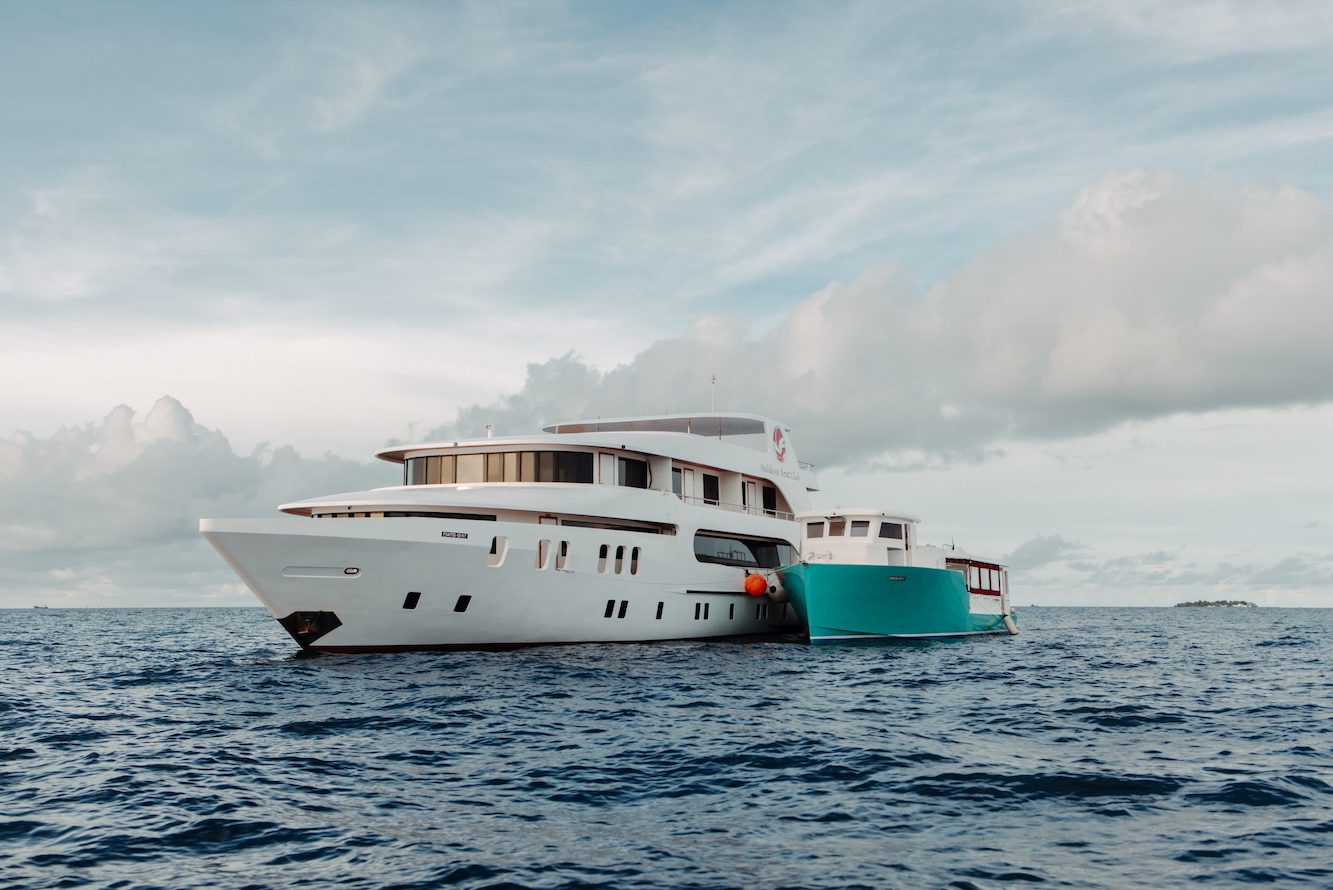
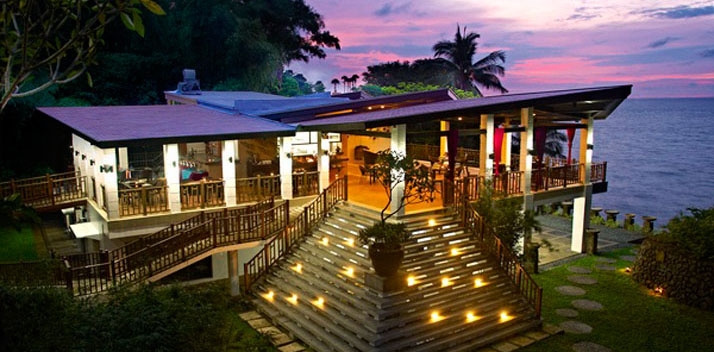

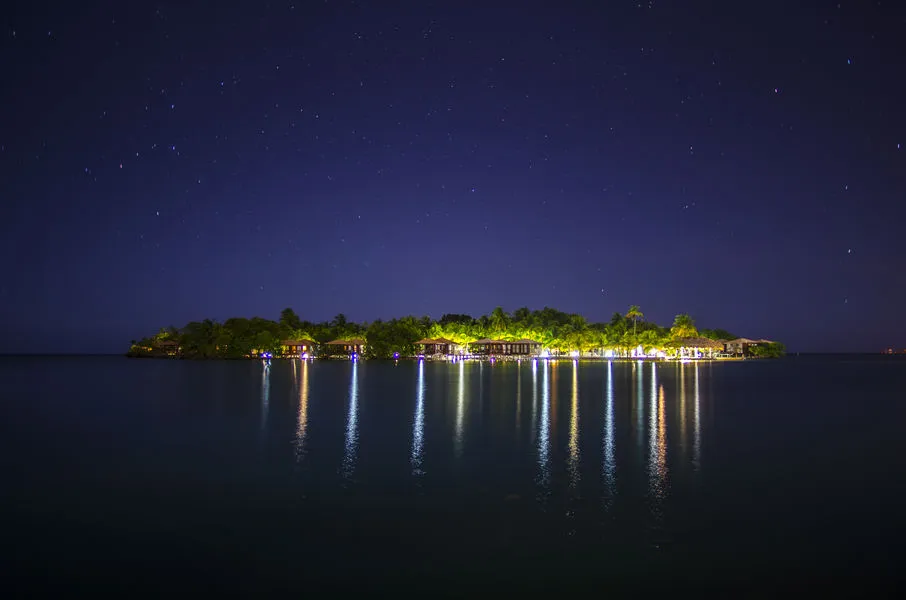
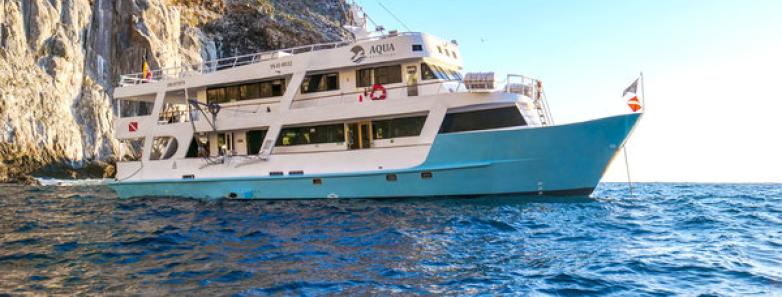
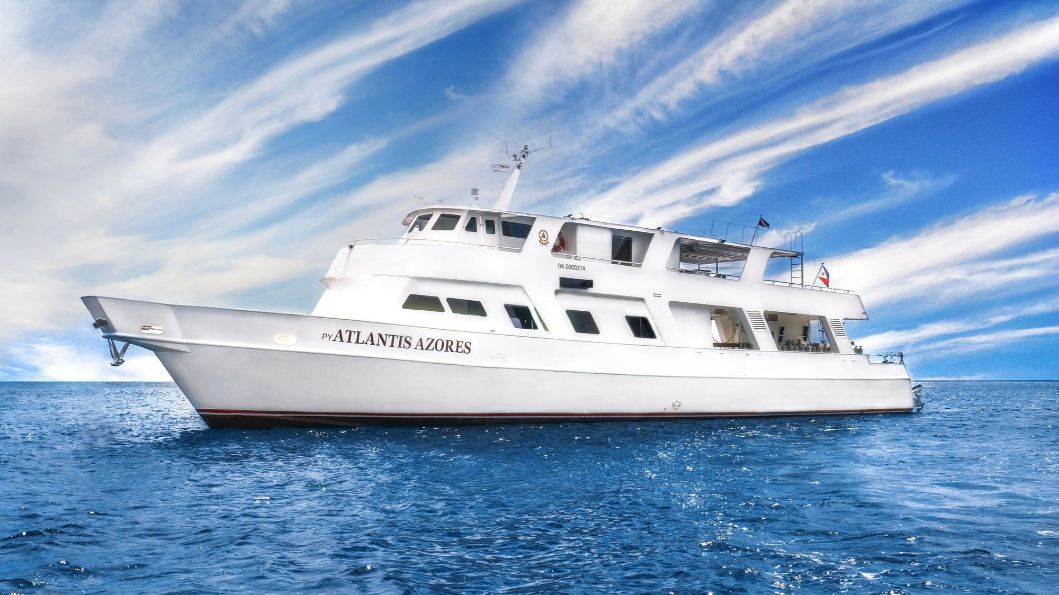
_1742377020.jpg)
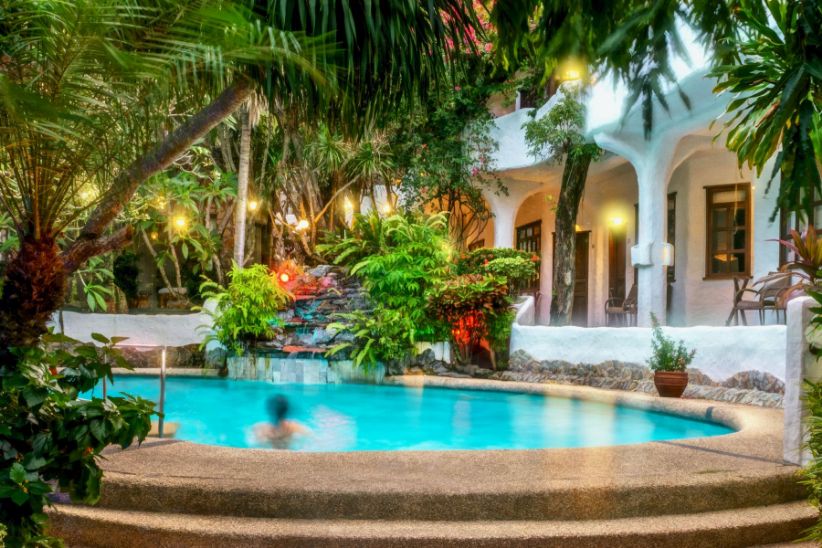
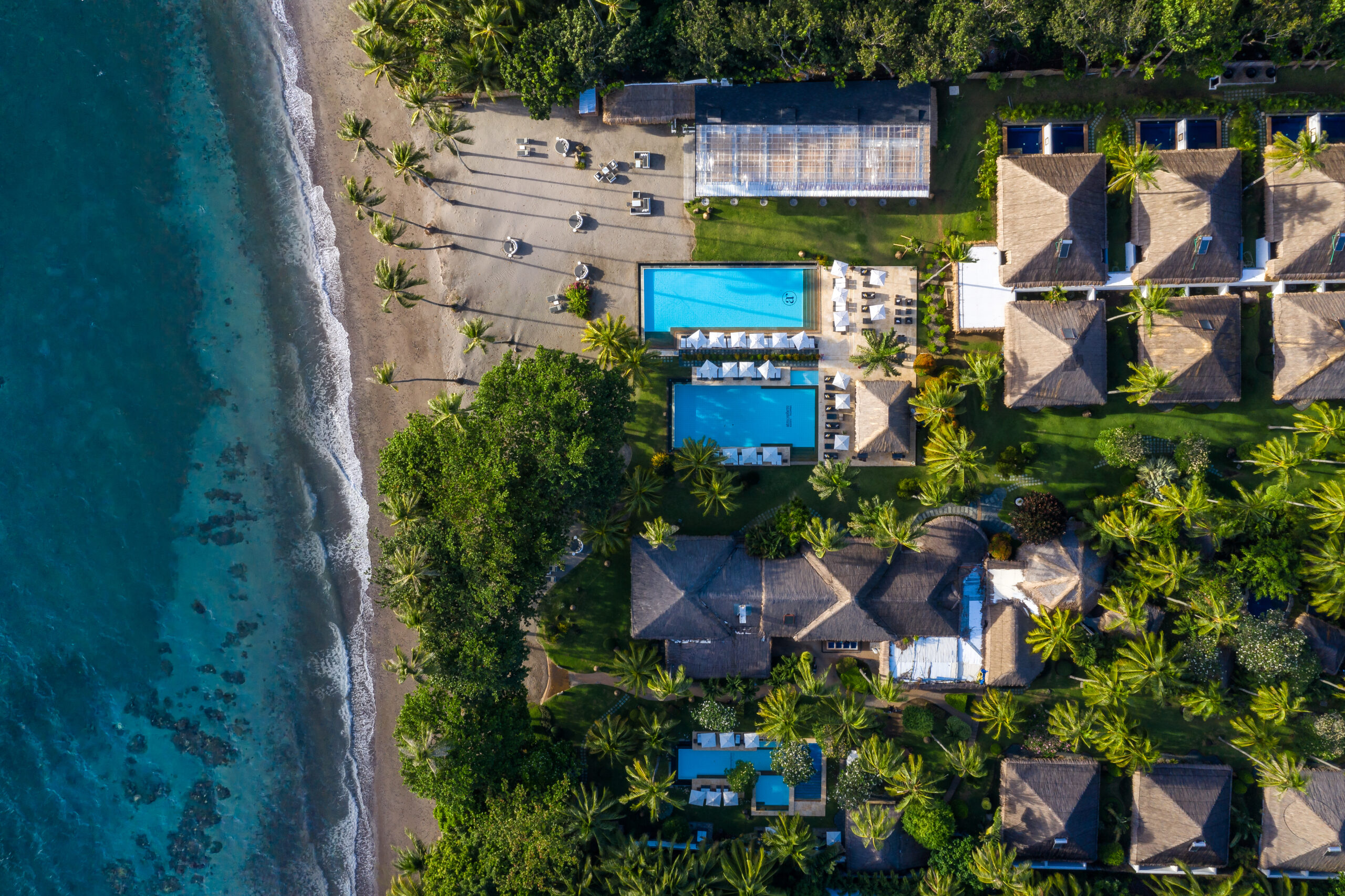
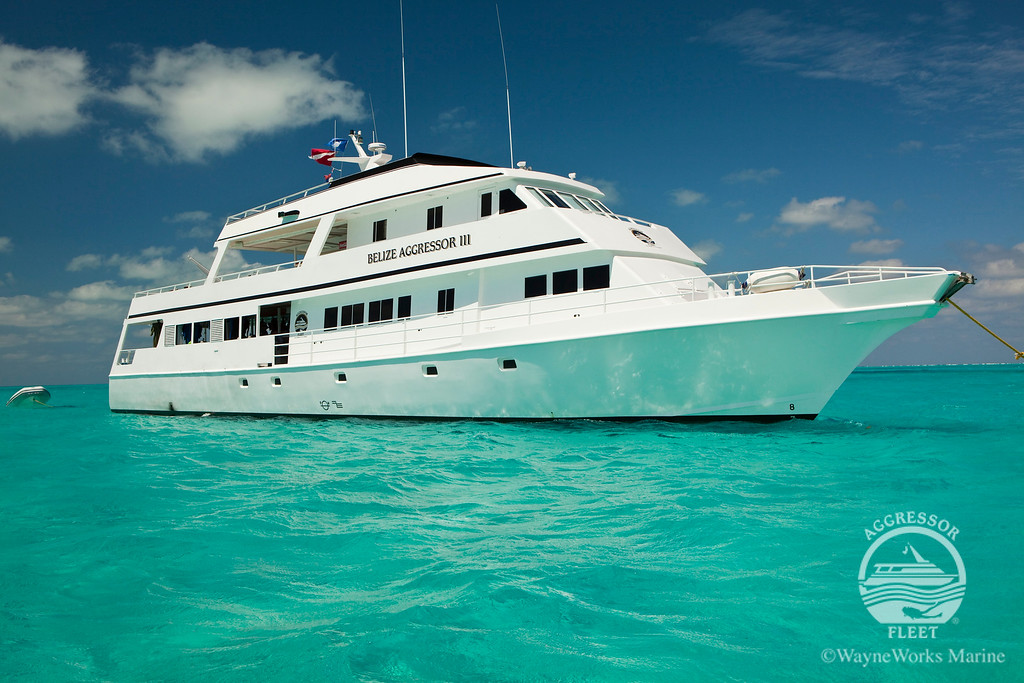
_1742825542.png)
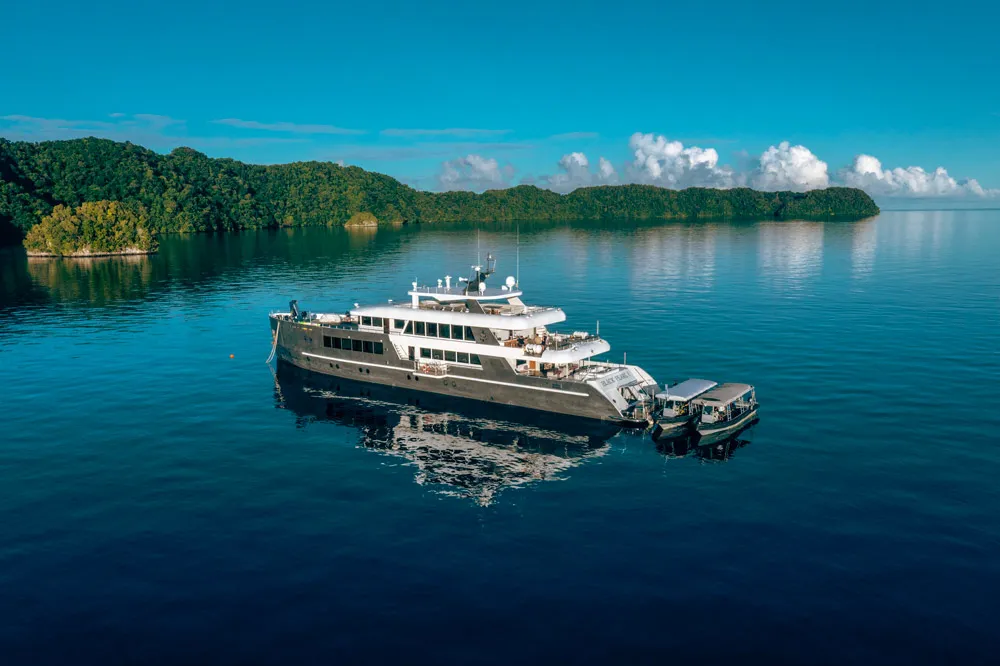
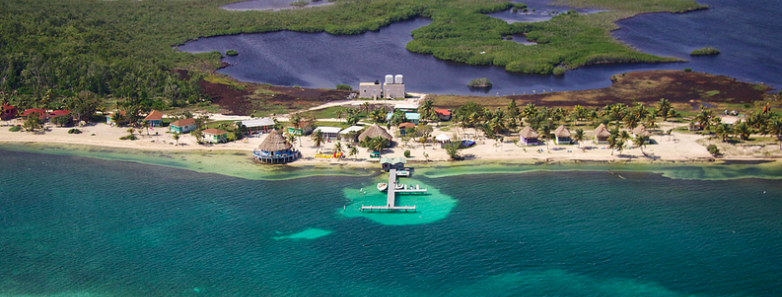
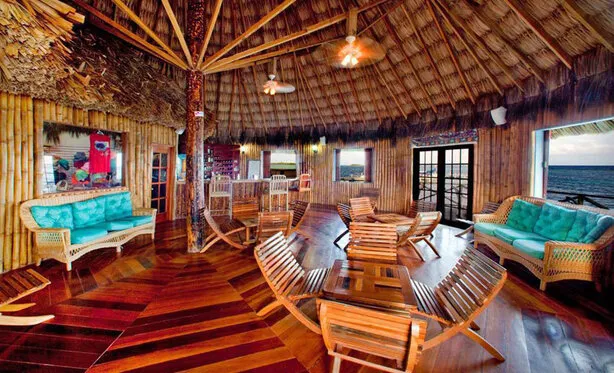
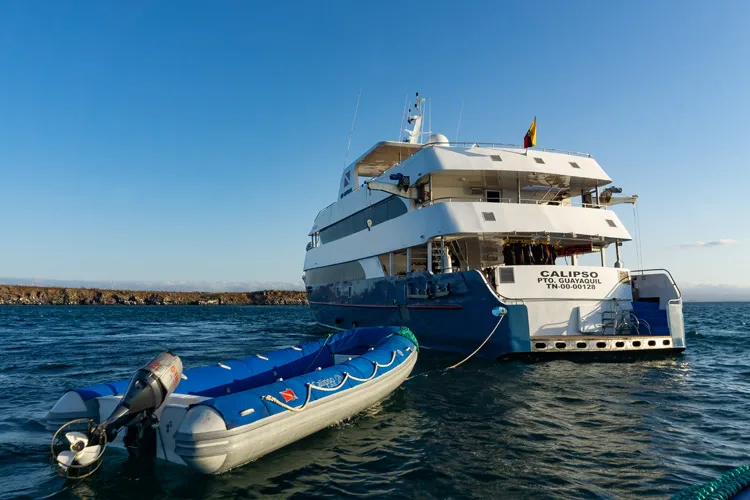
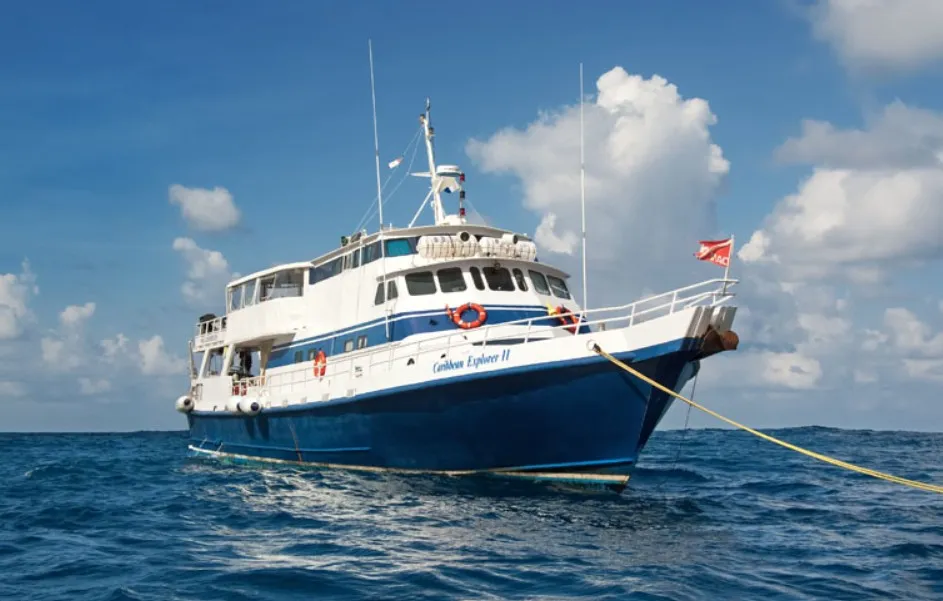
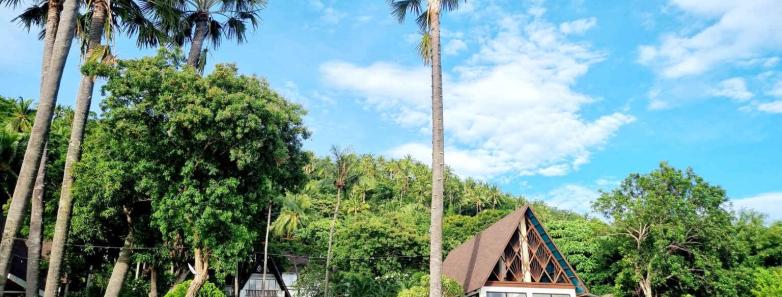
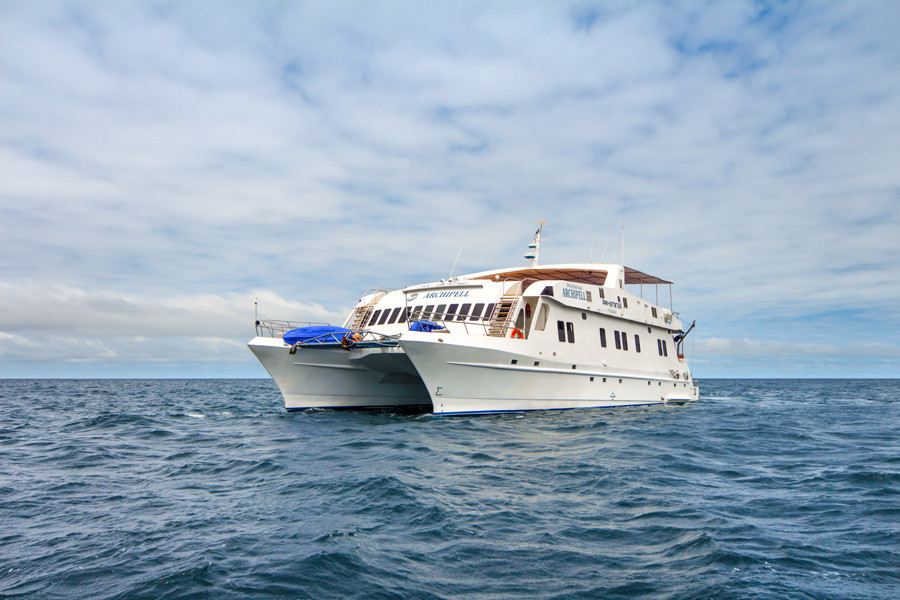




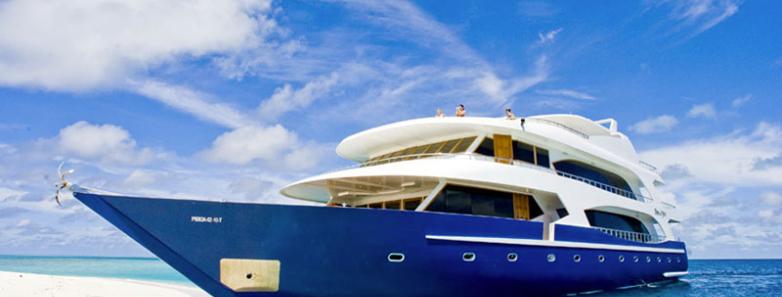
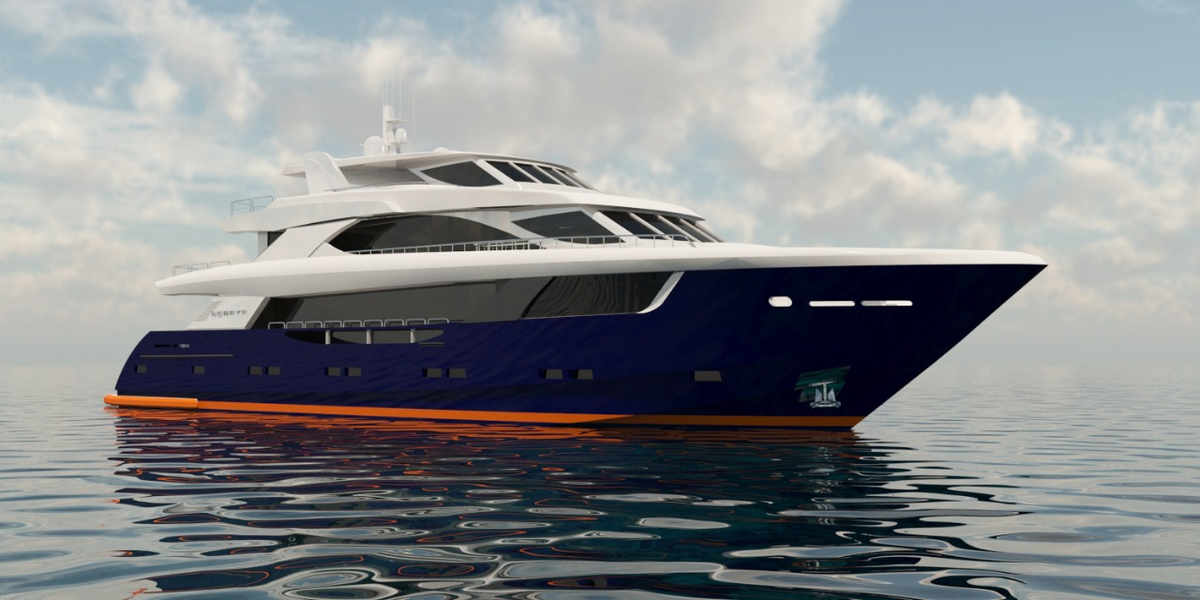
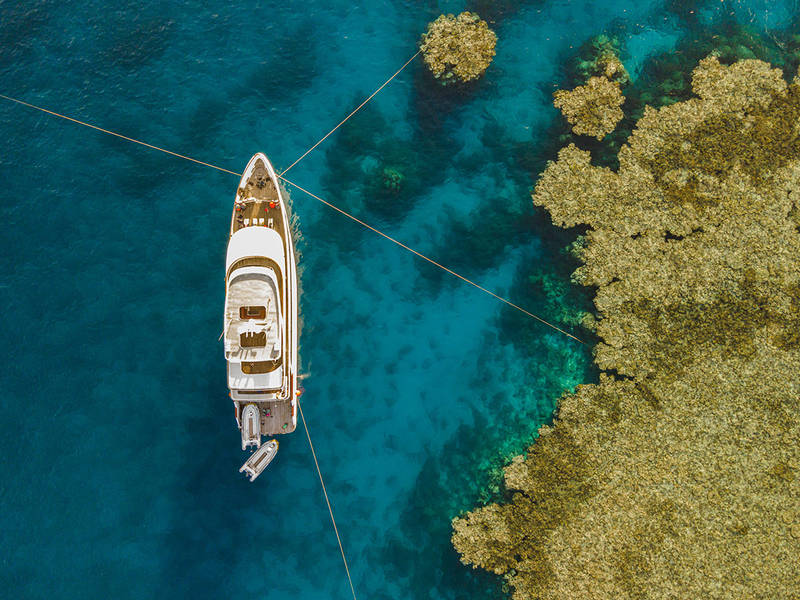
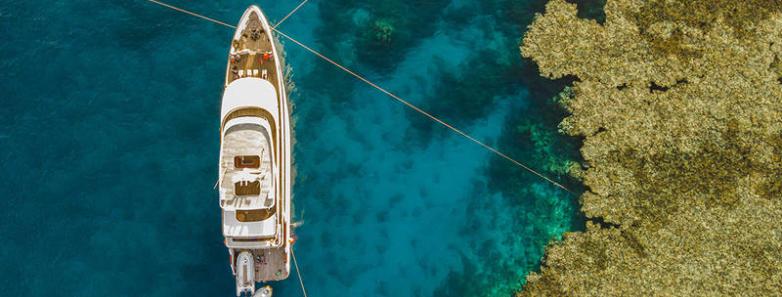
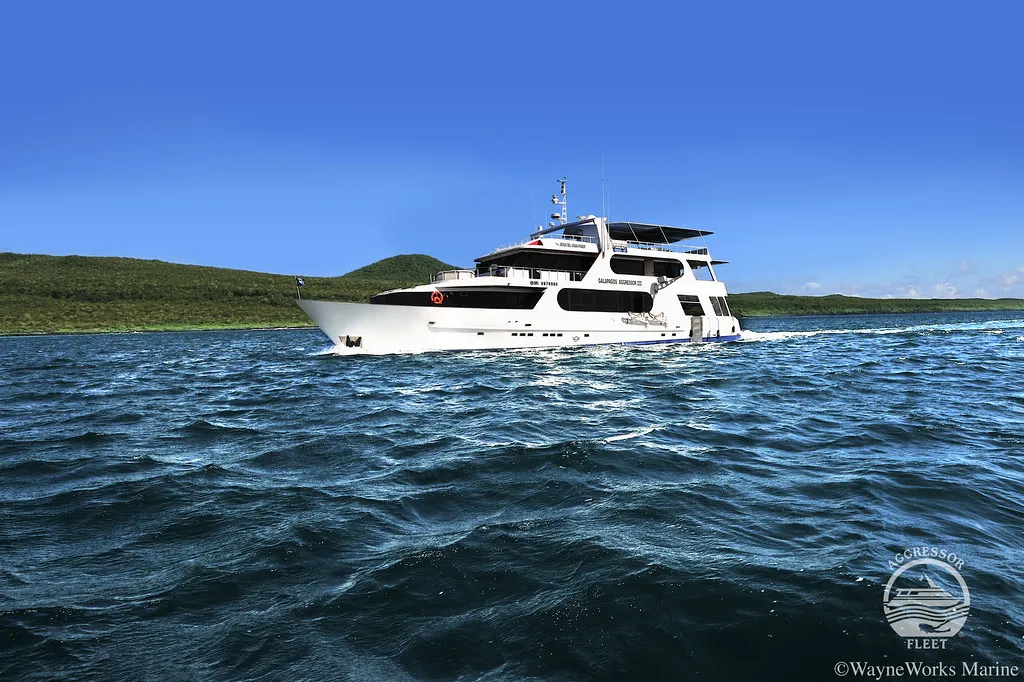
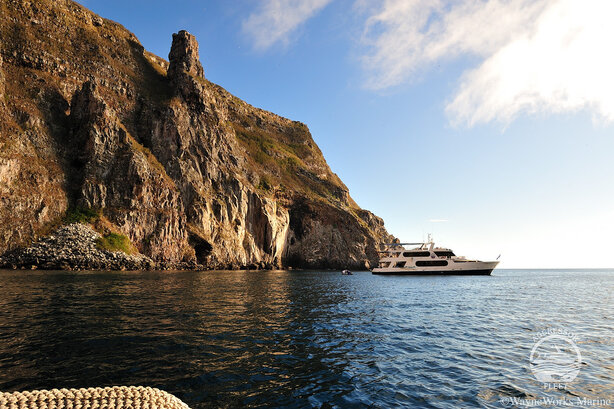
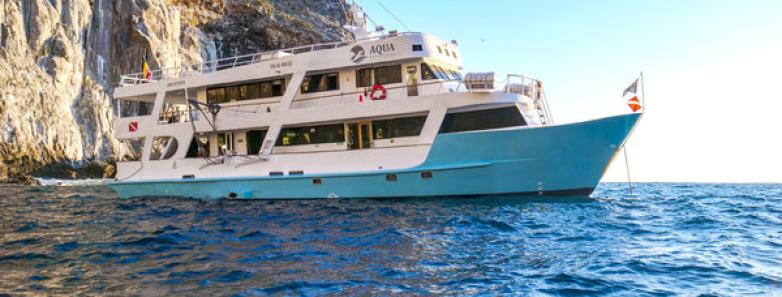
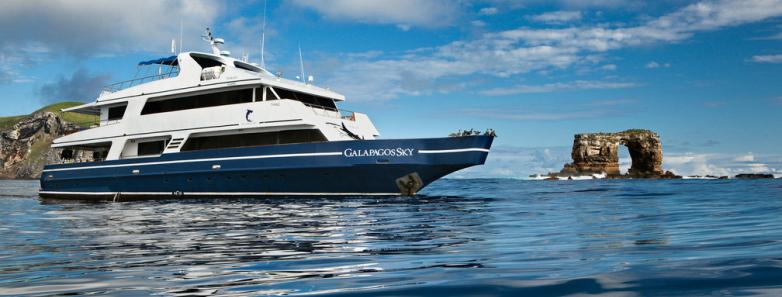
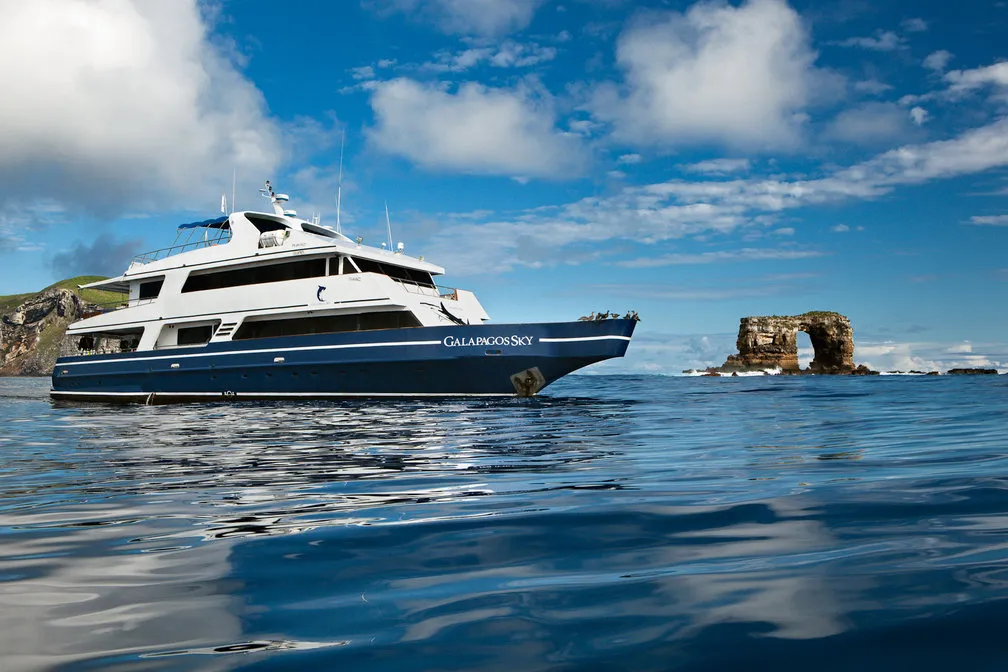

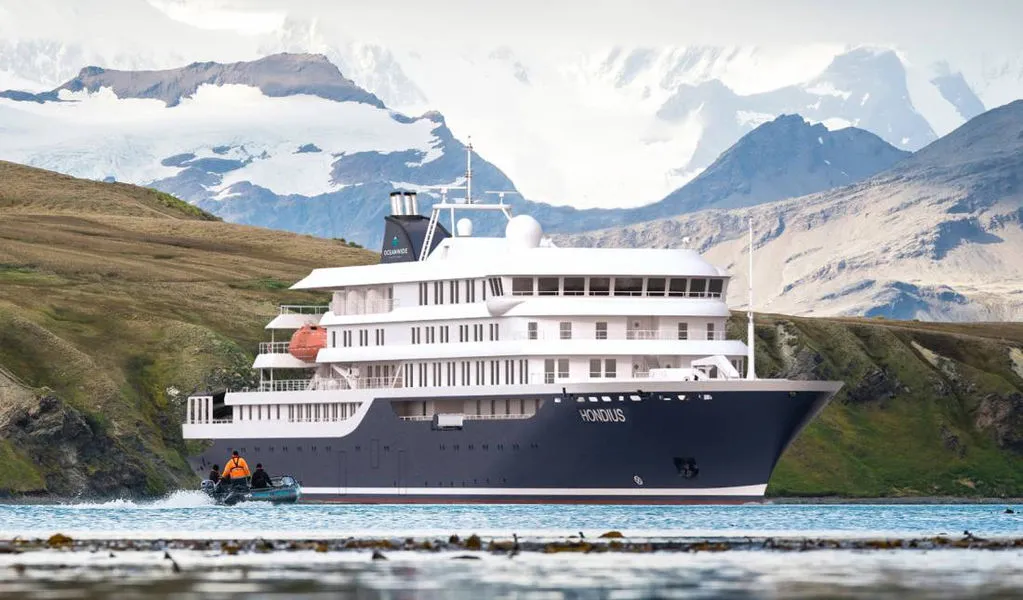
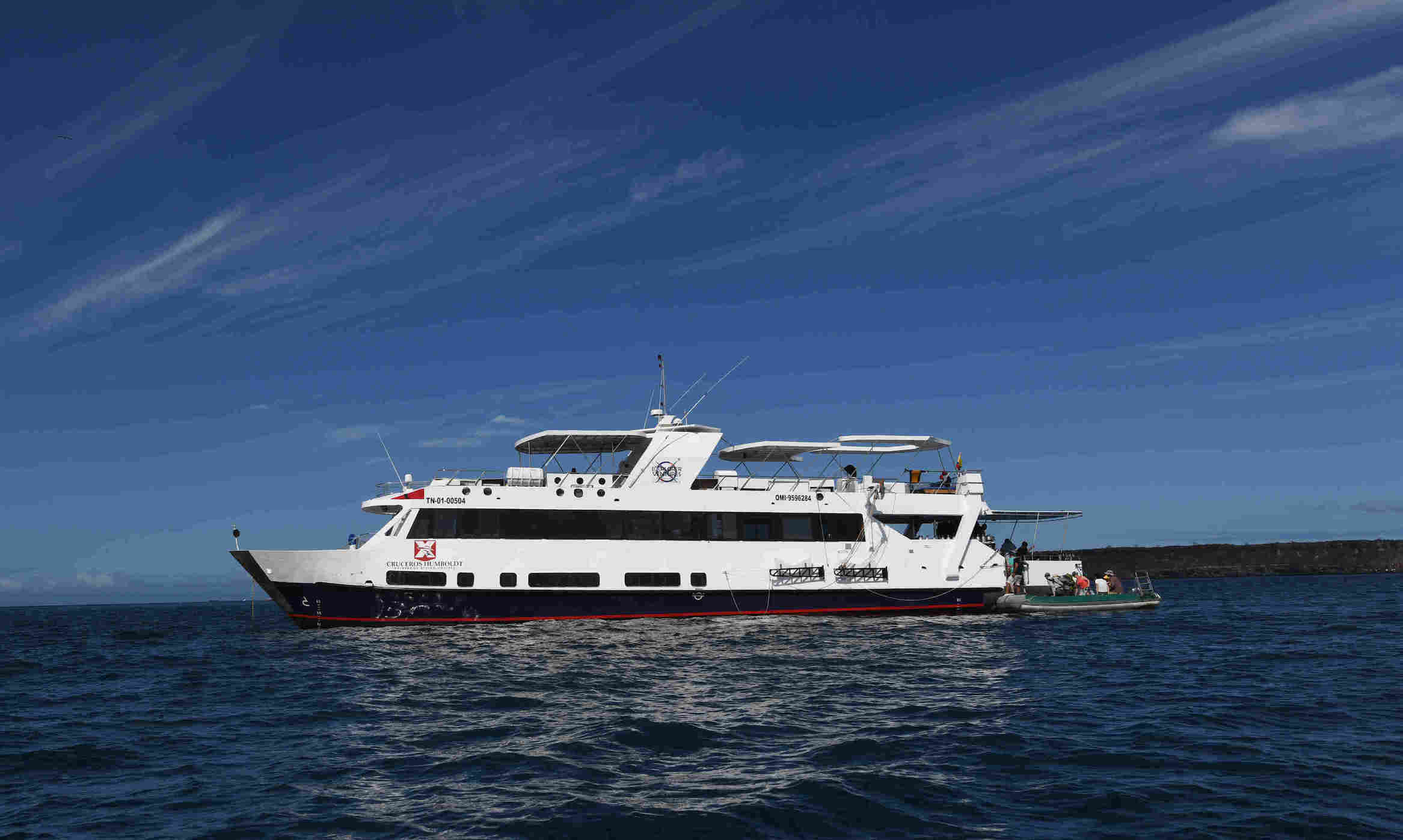
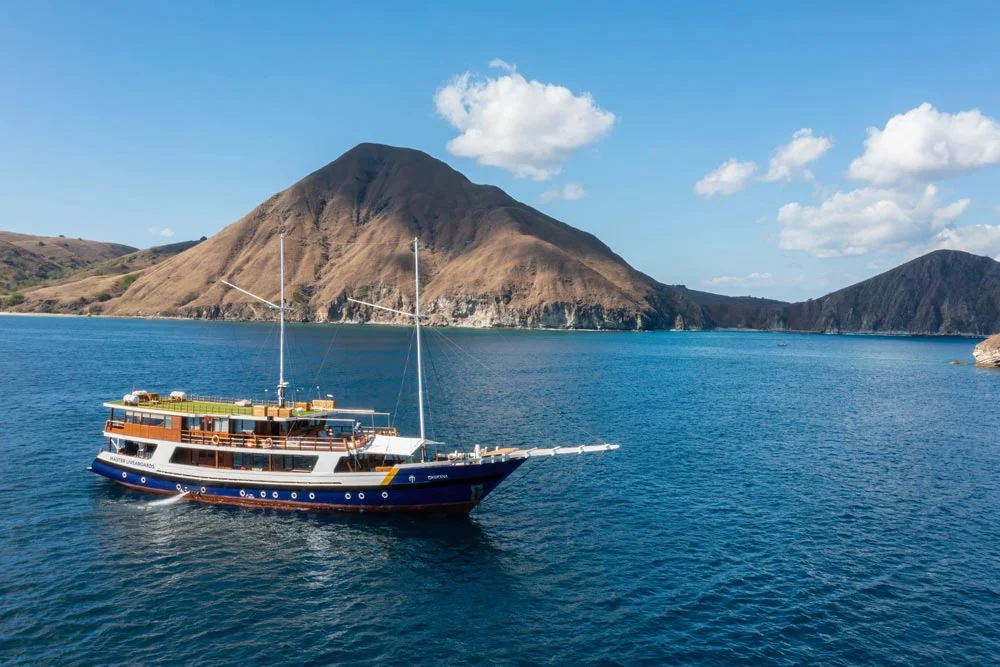
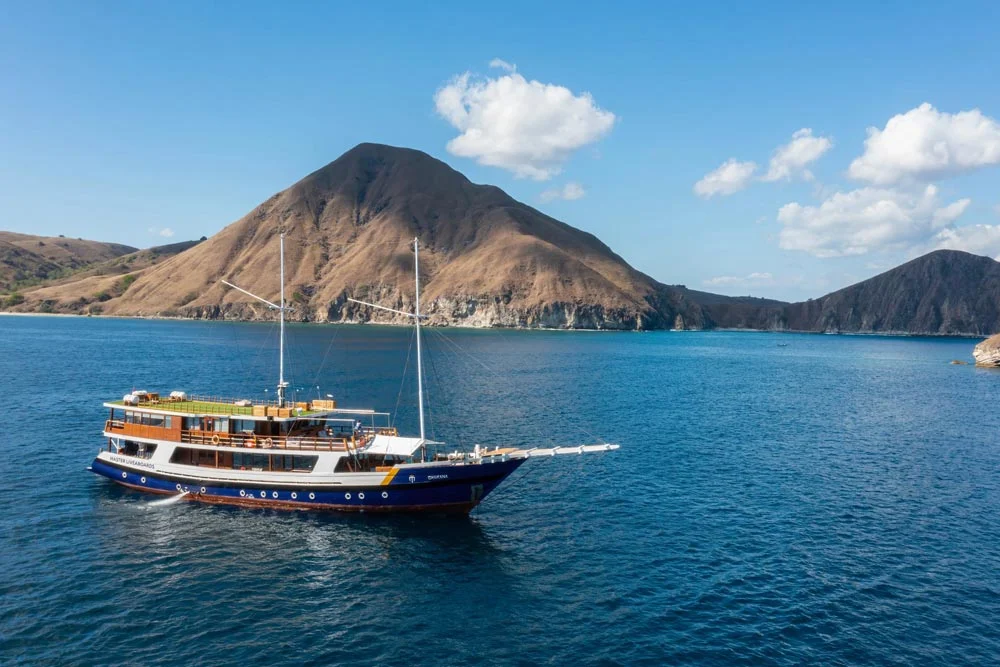


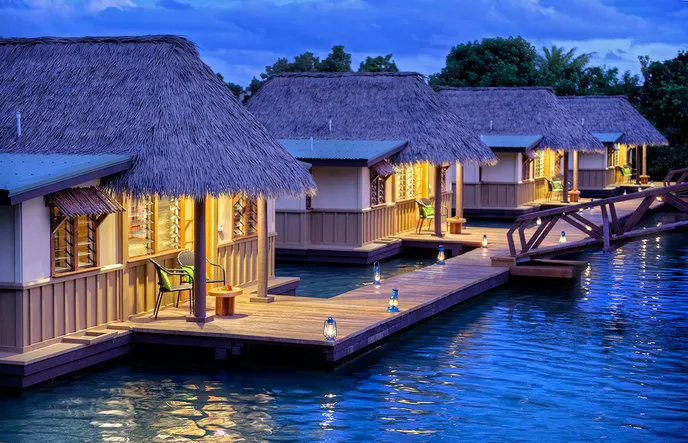
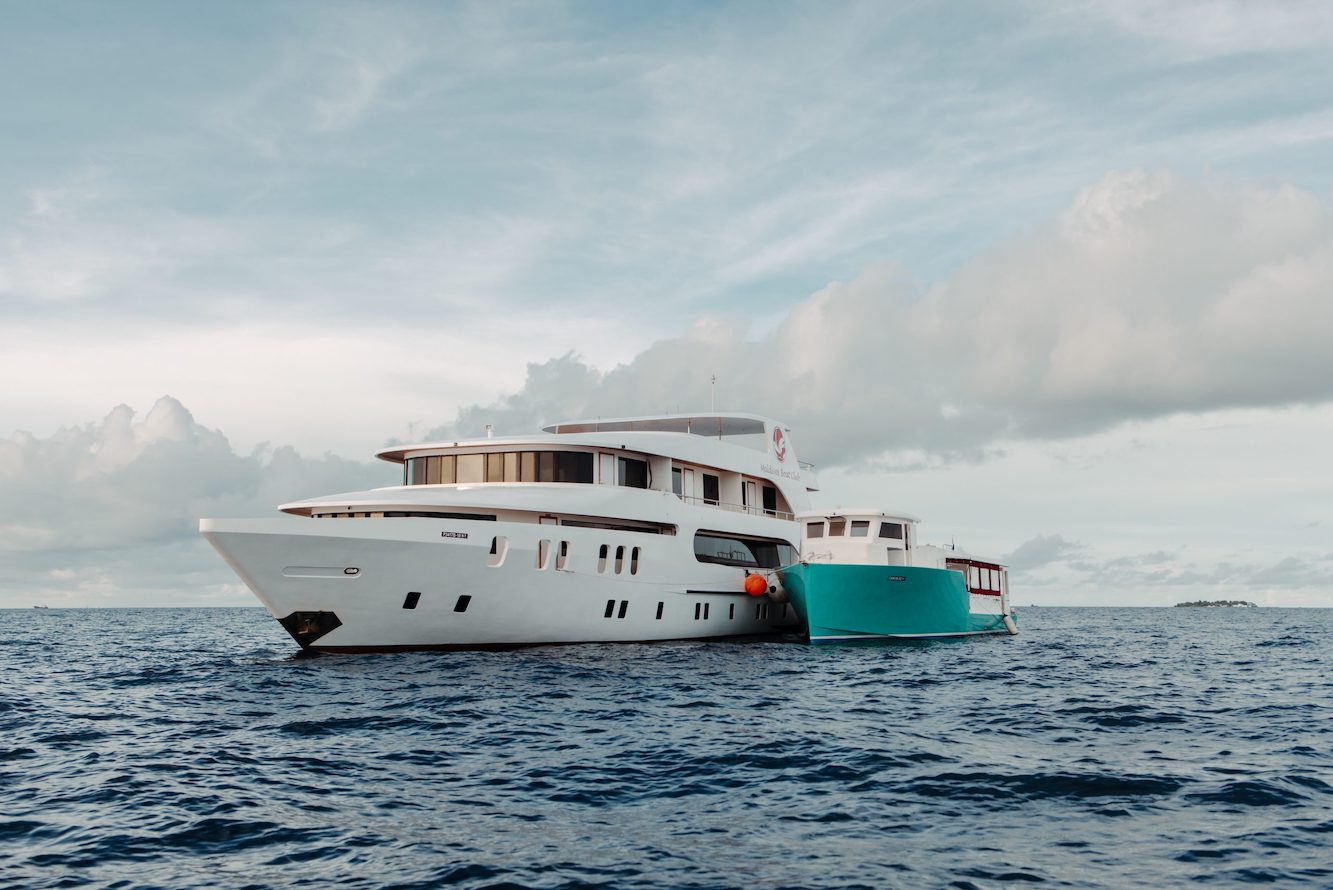
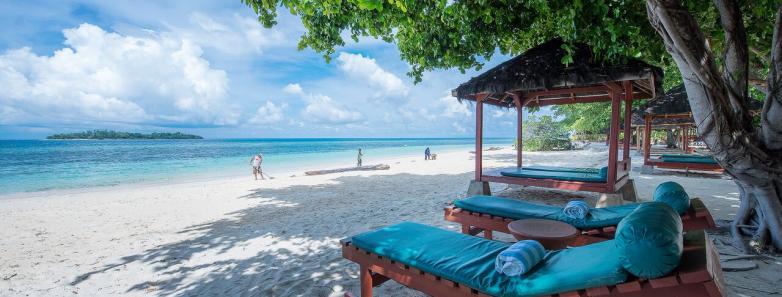
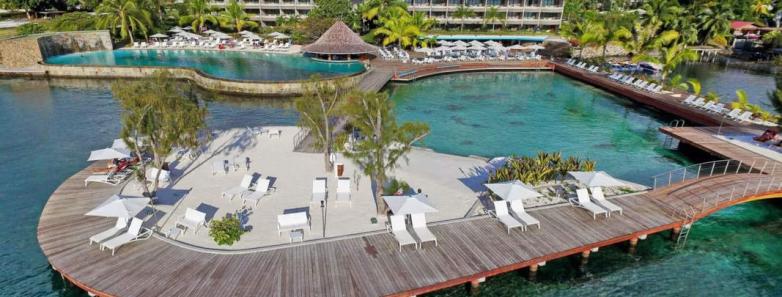
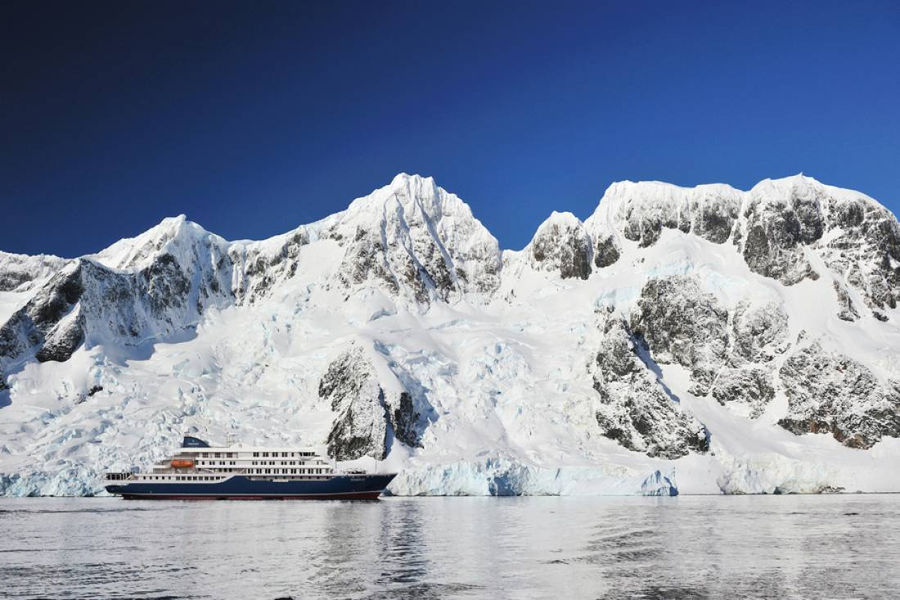


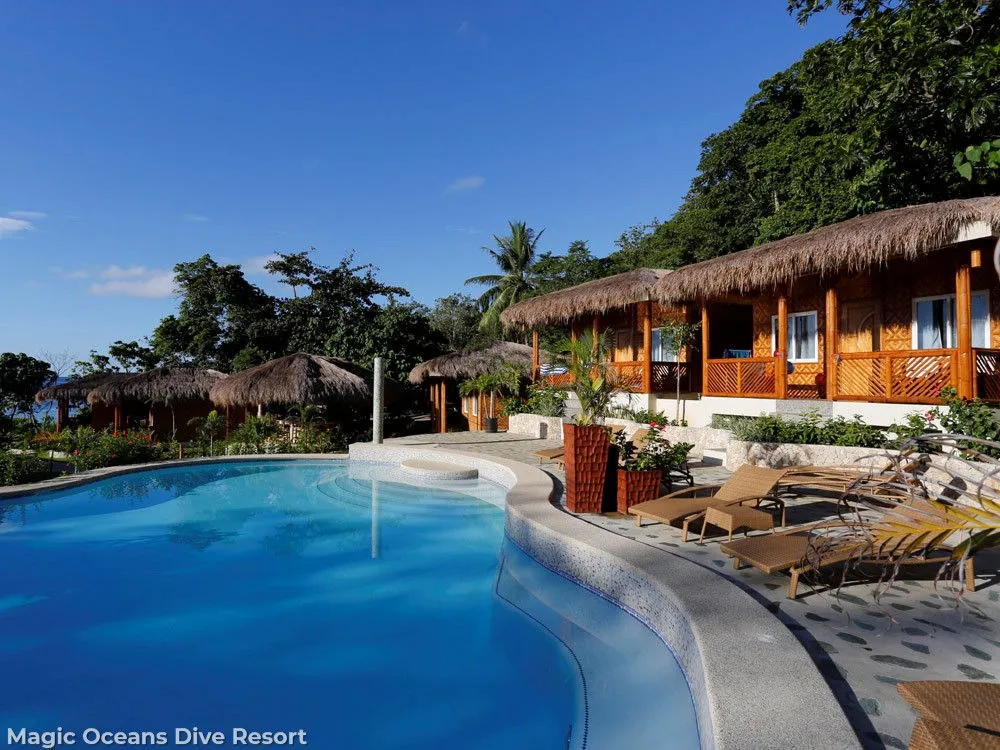
_800x544-optimized_1743009191.webp)

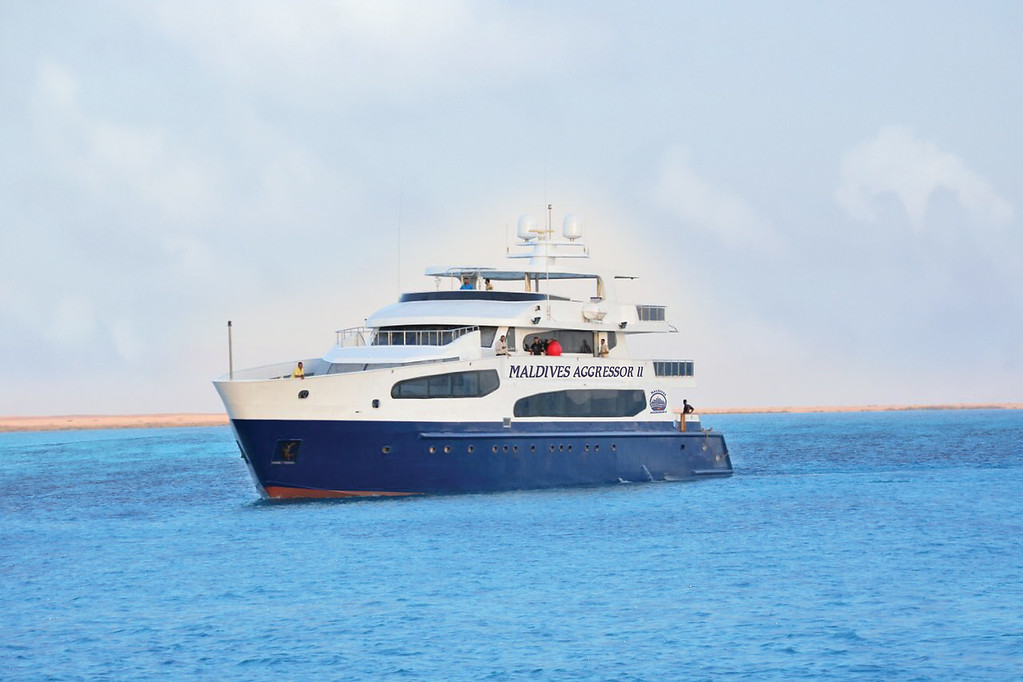
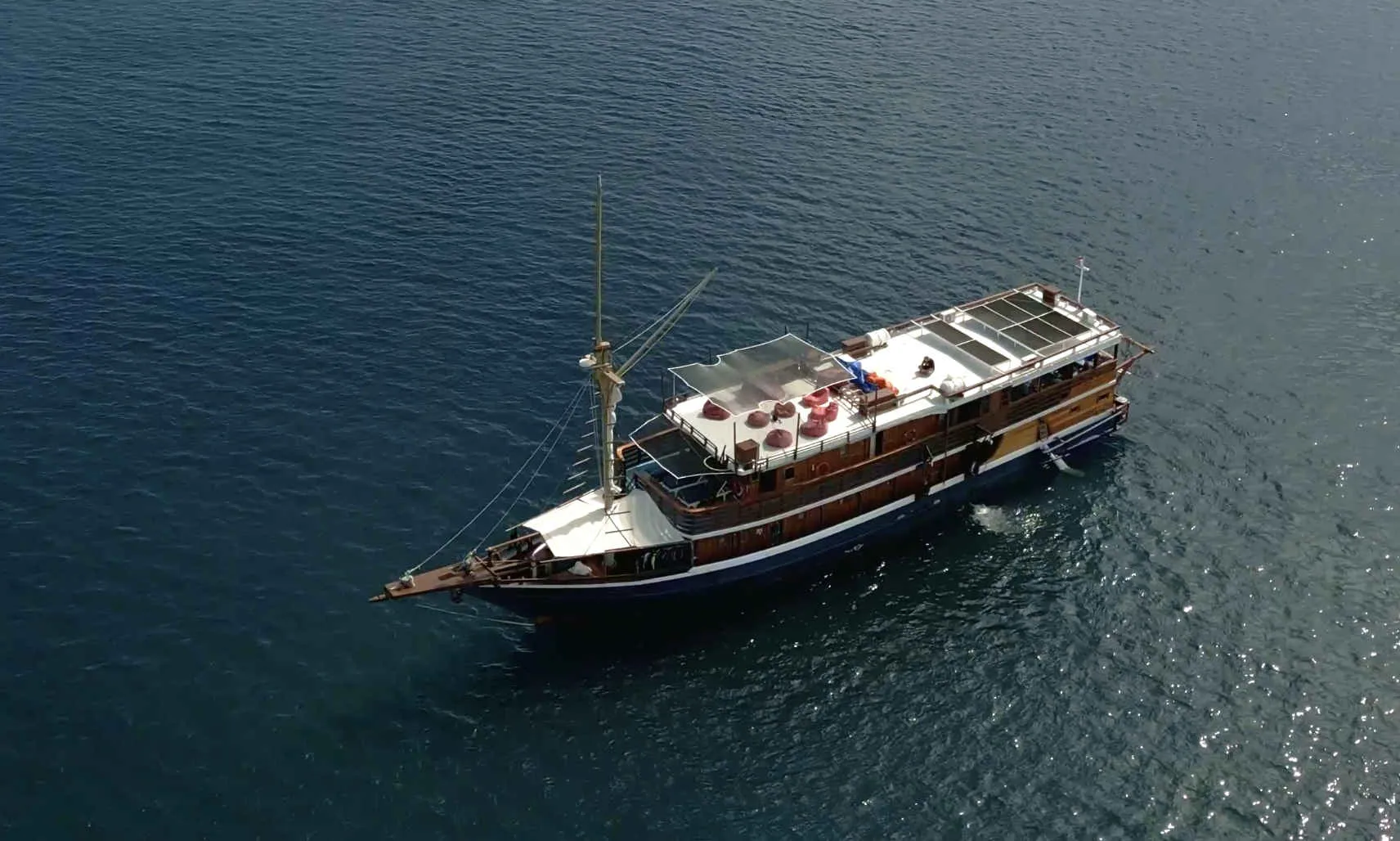
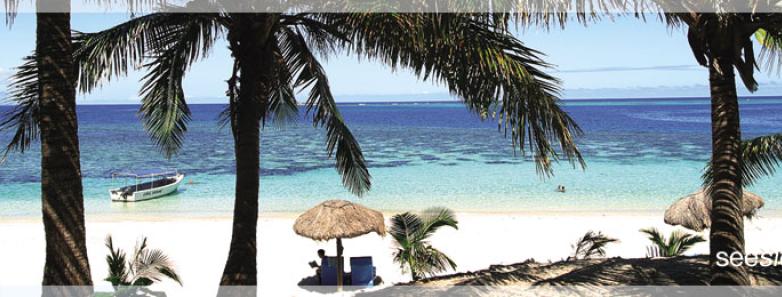
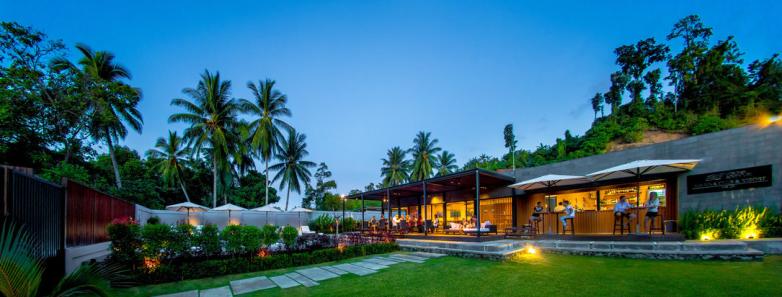
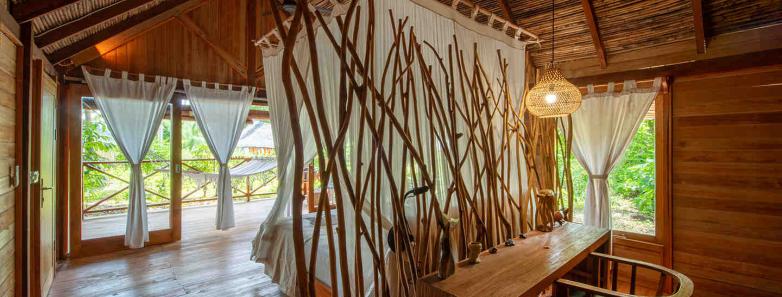
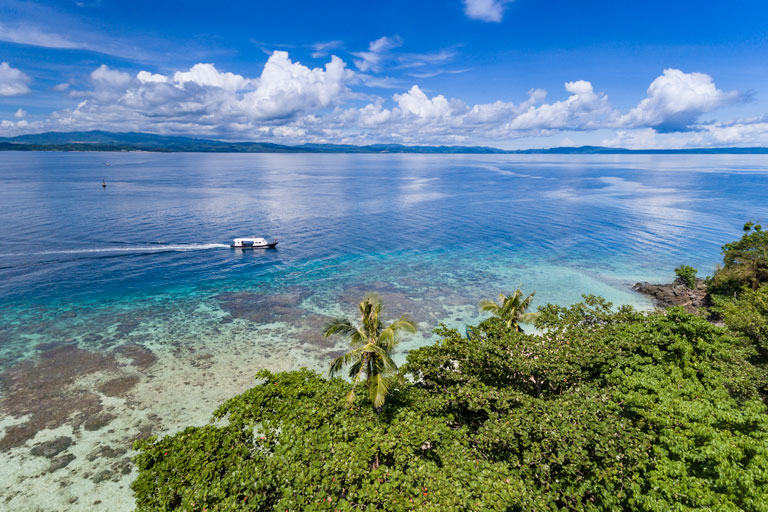
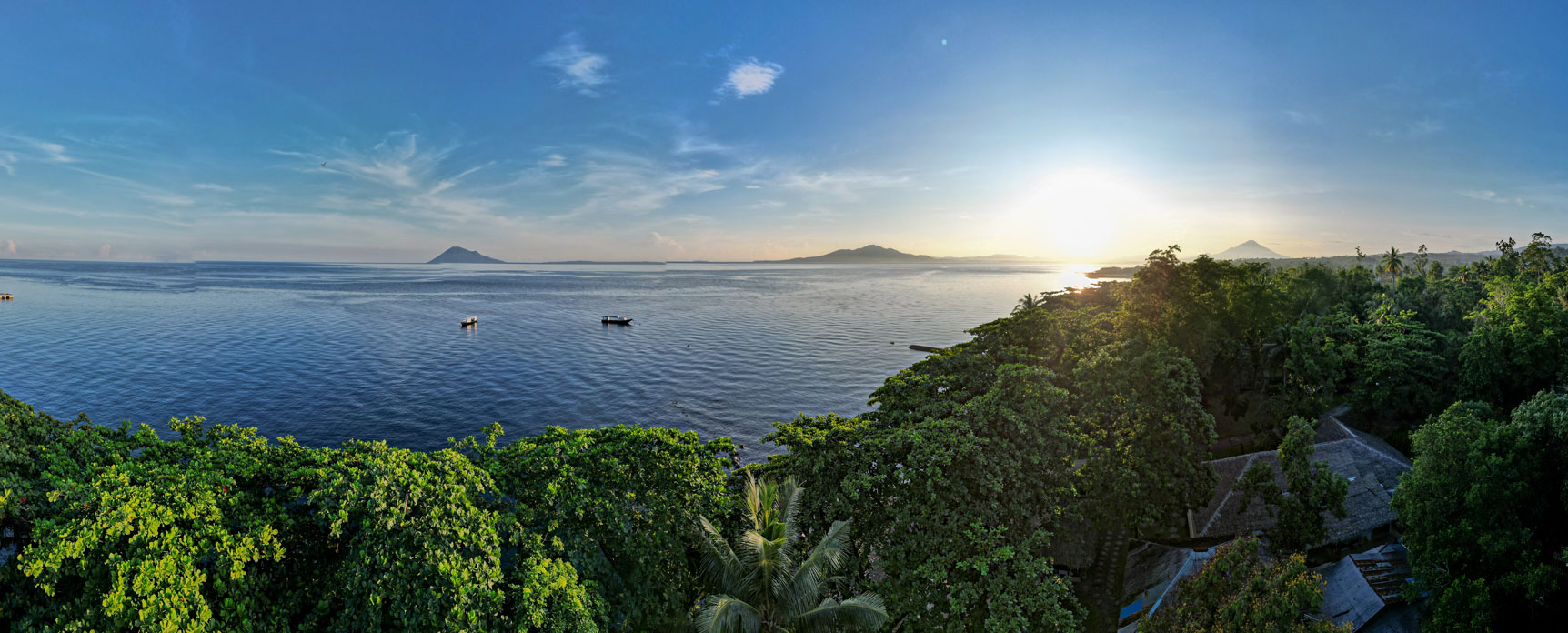
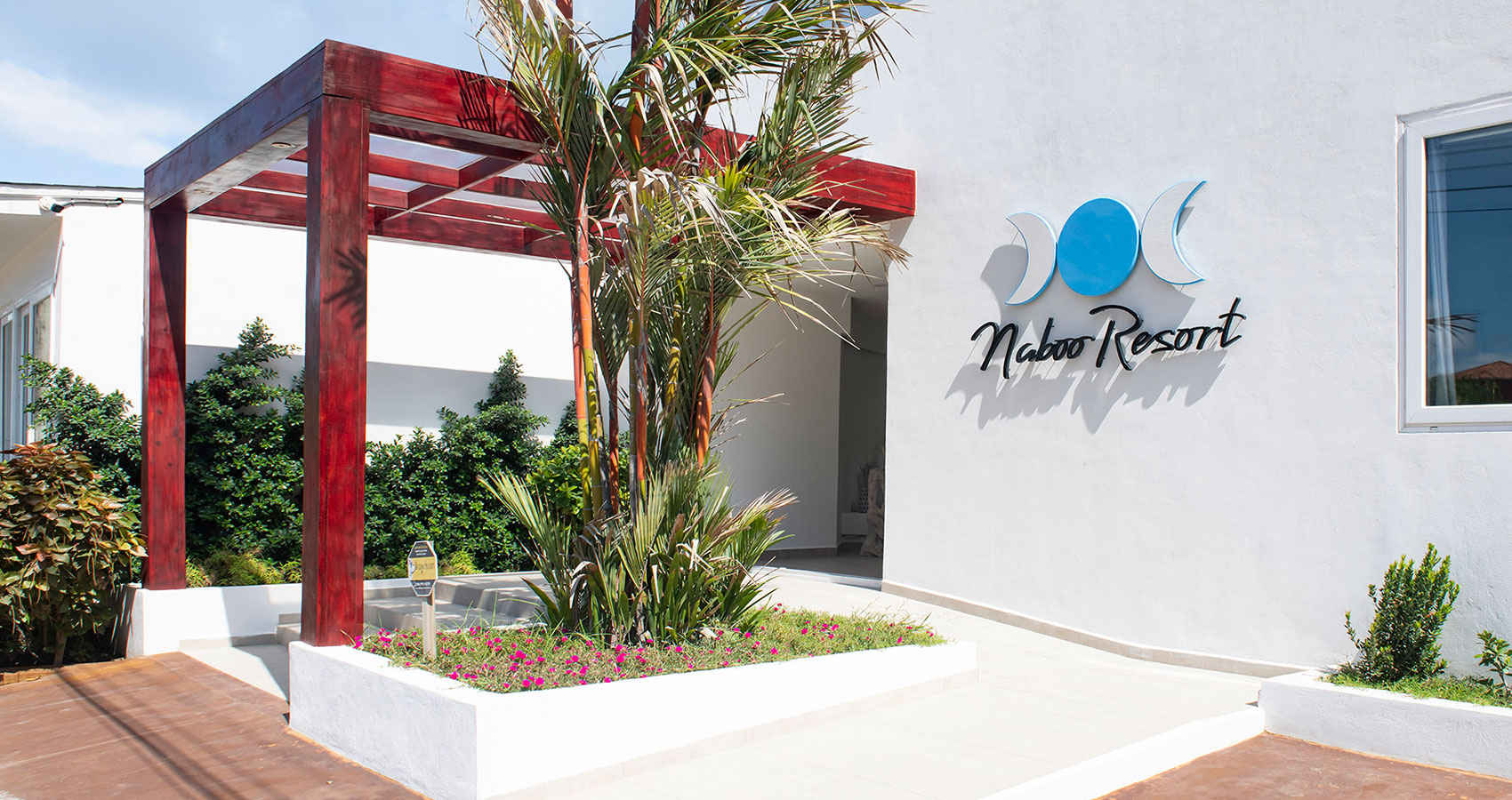
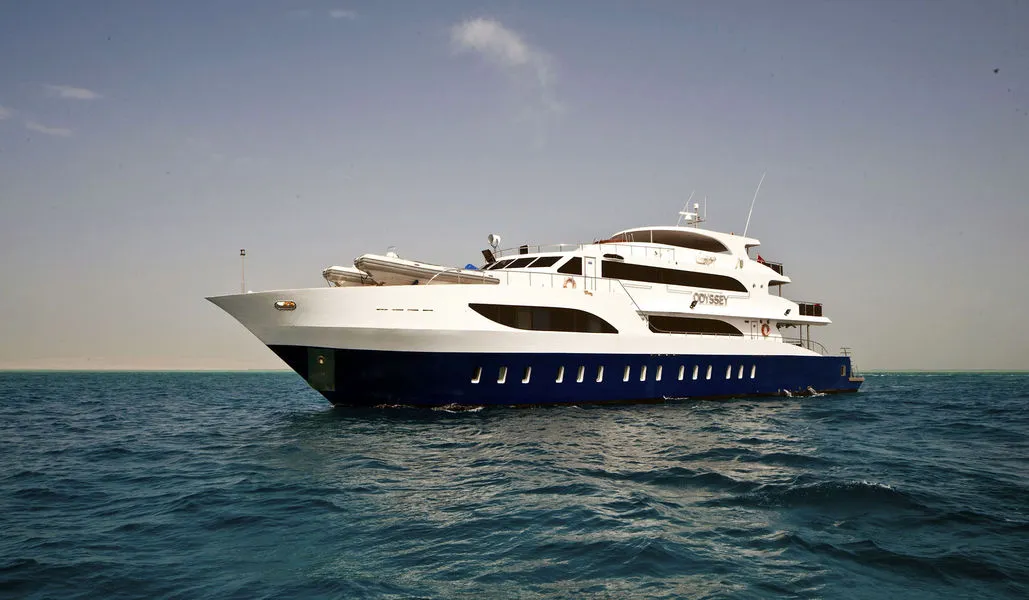
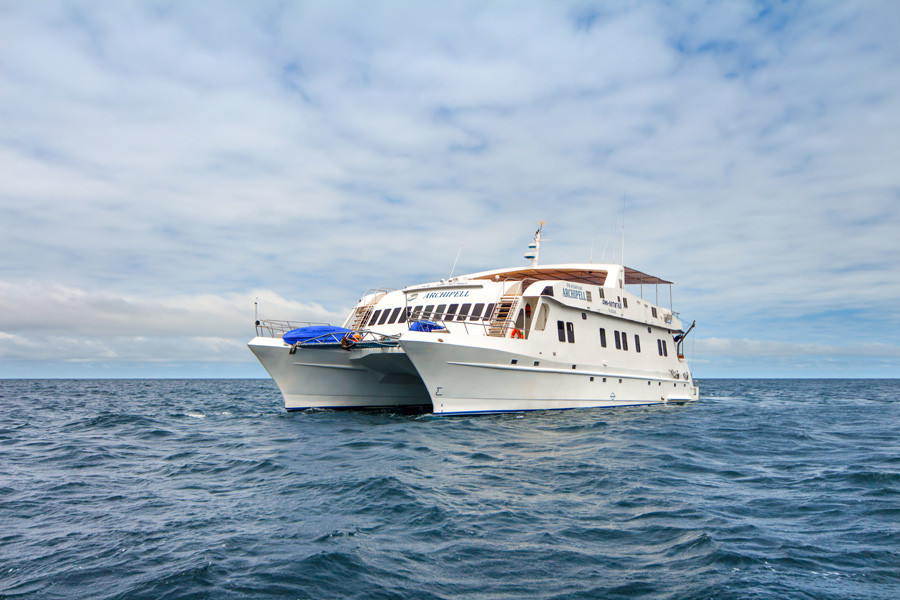
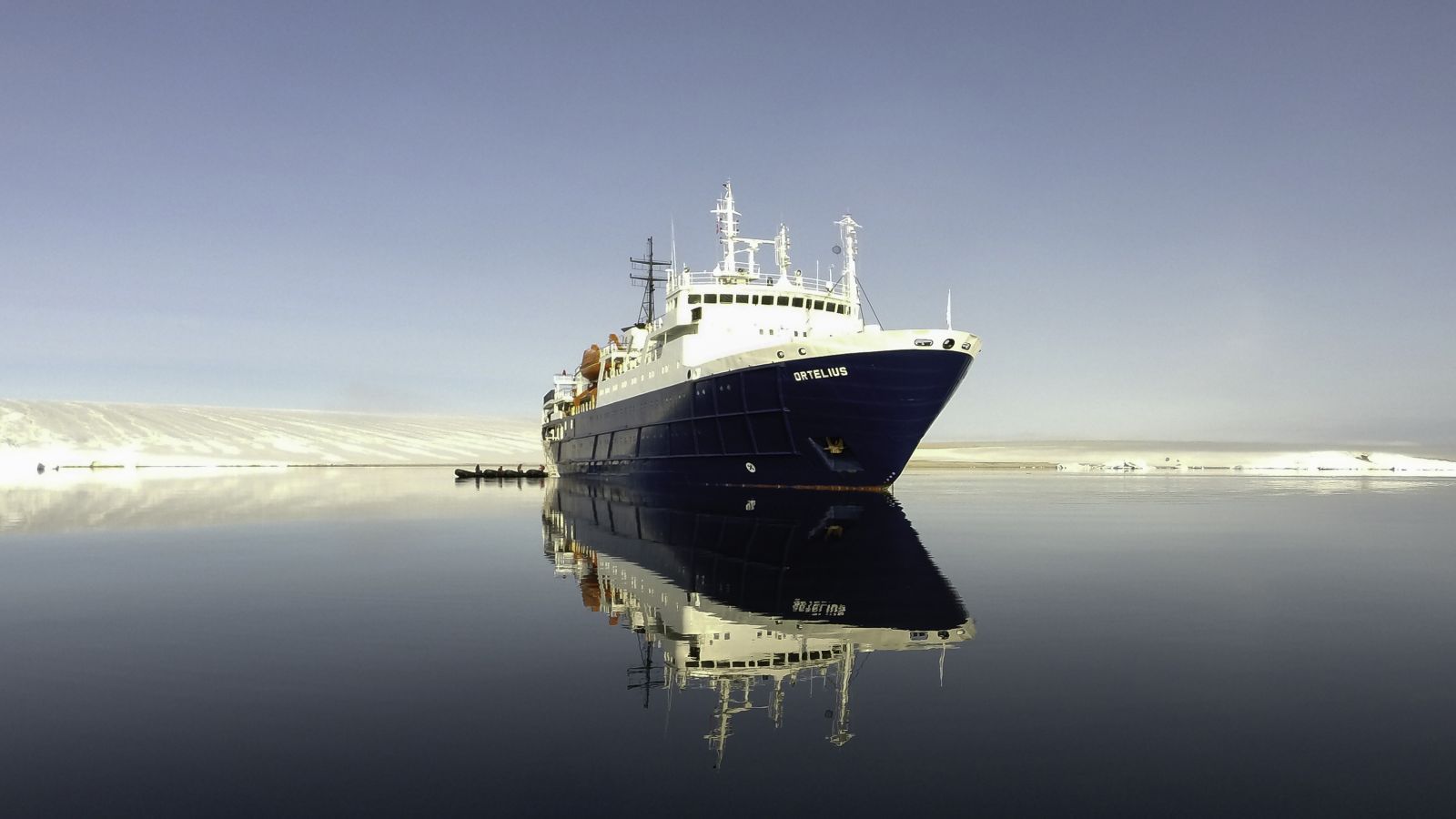
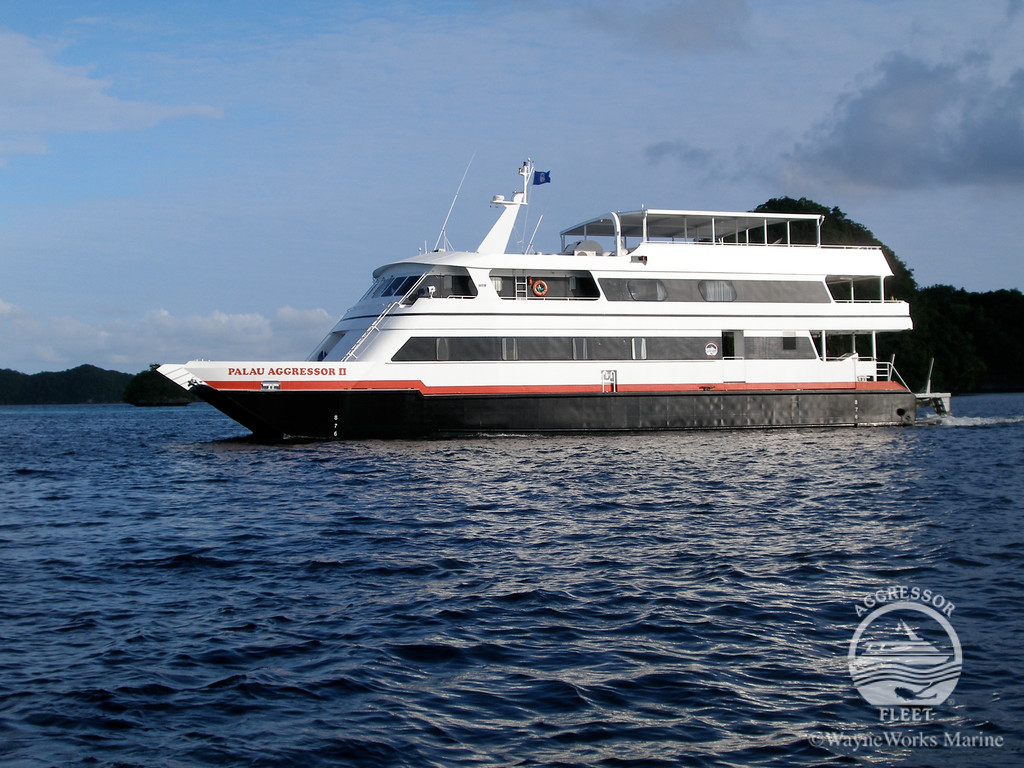
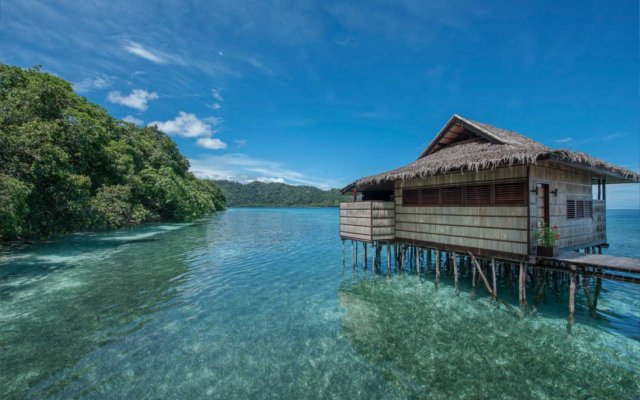
_Robert_van_Poppelen_Plancius_at_Booth_Island_3-optimized_1743203609.webp)


